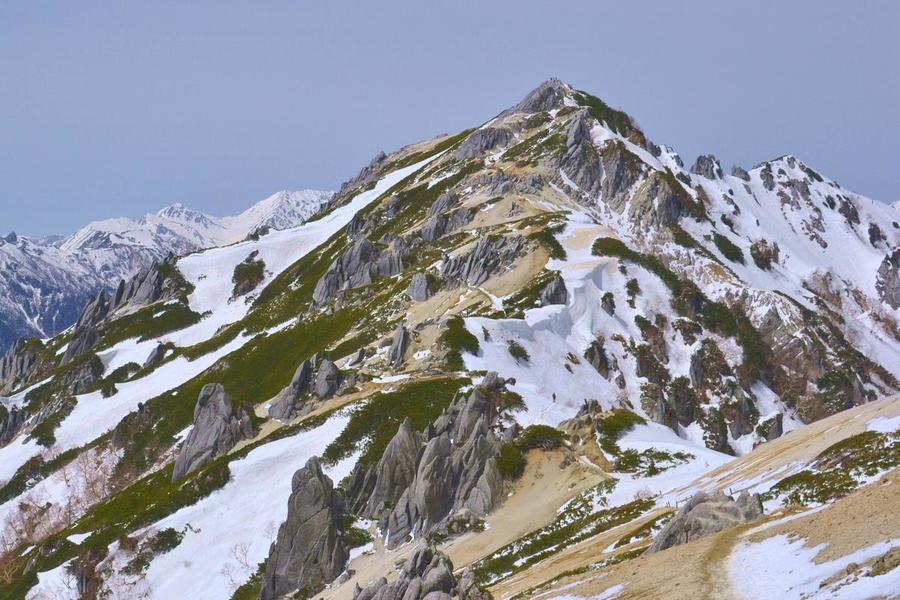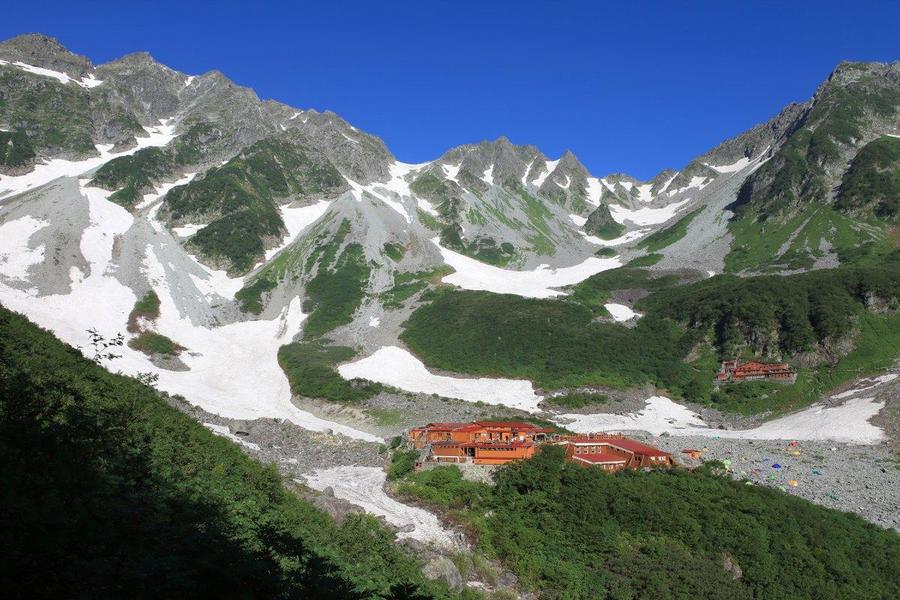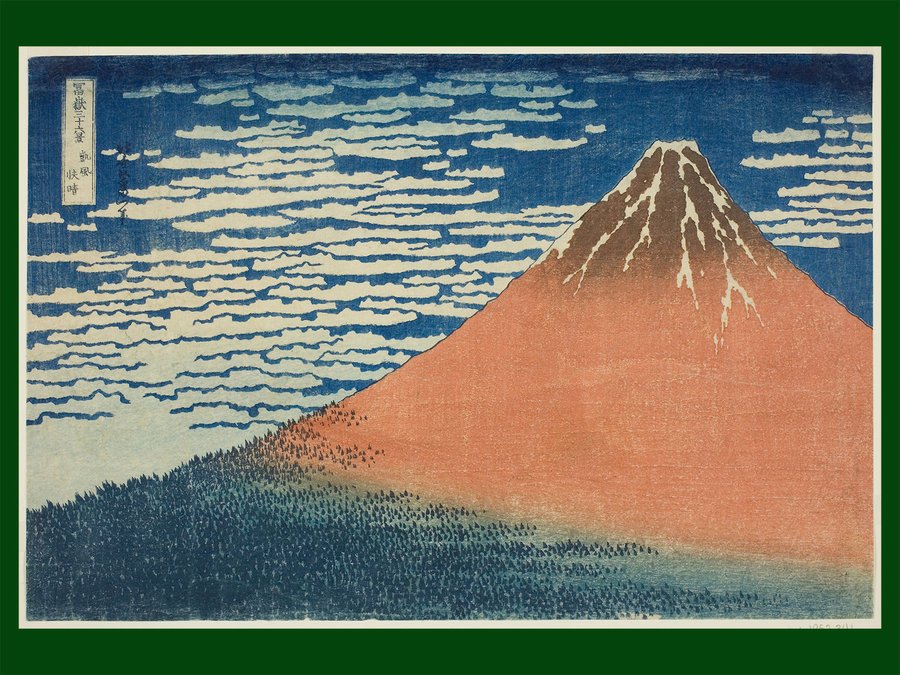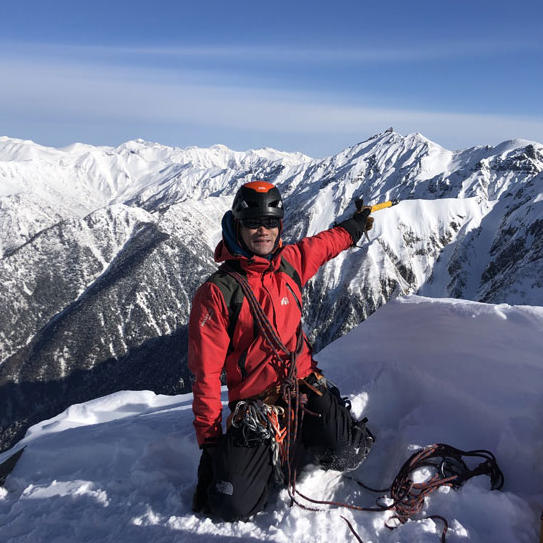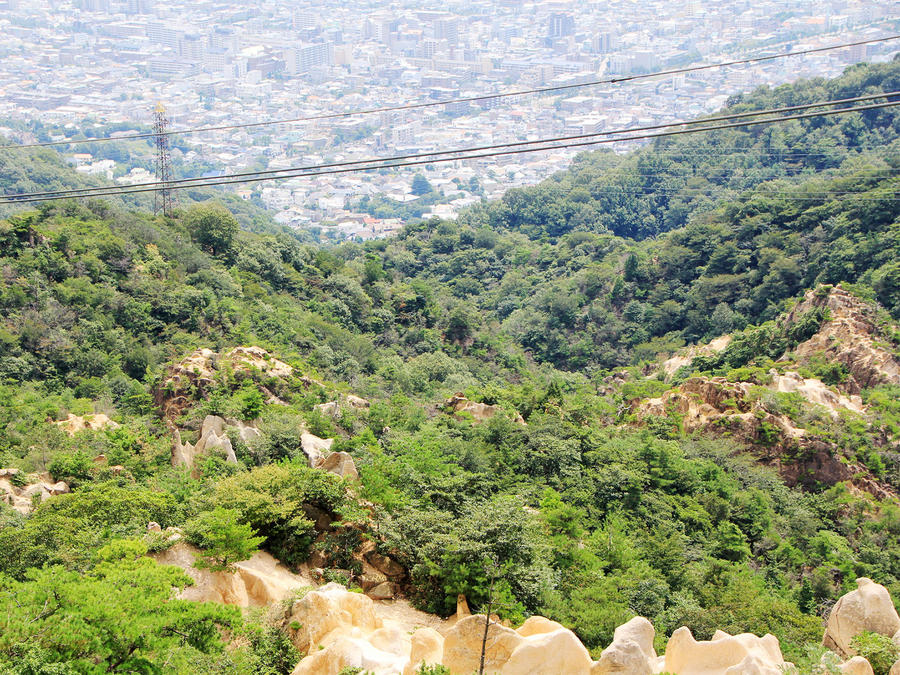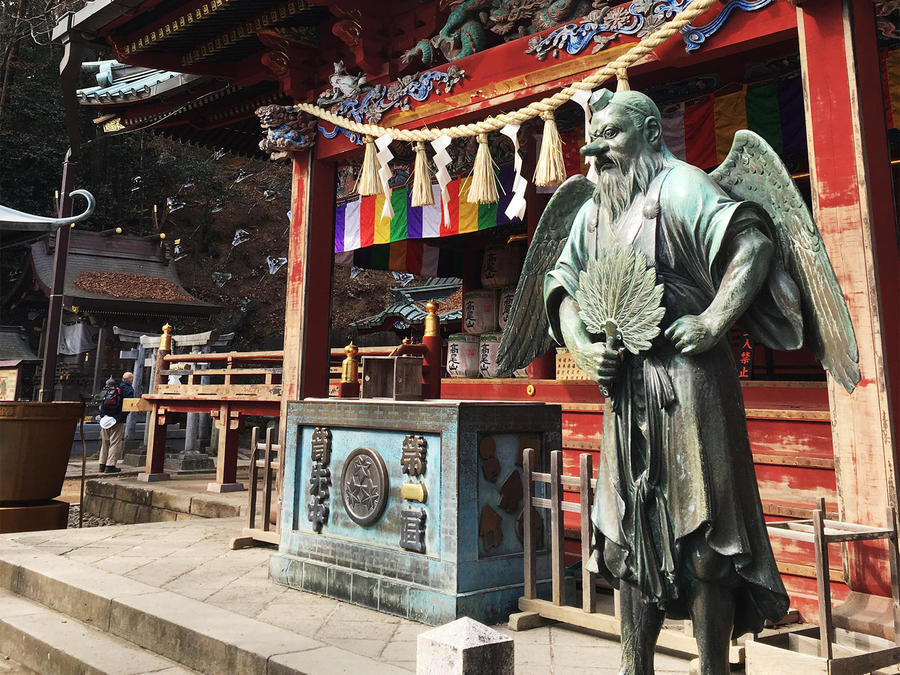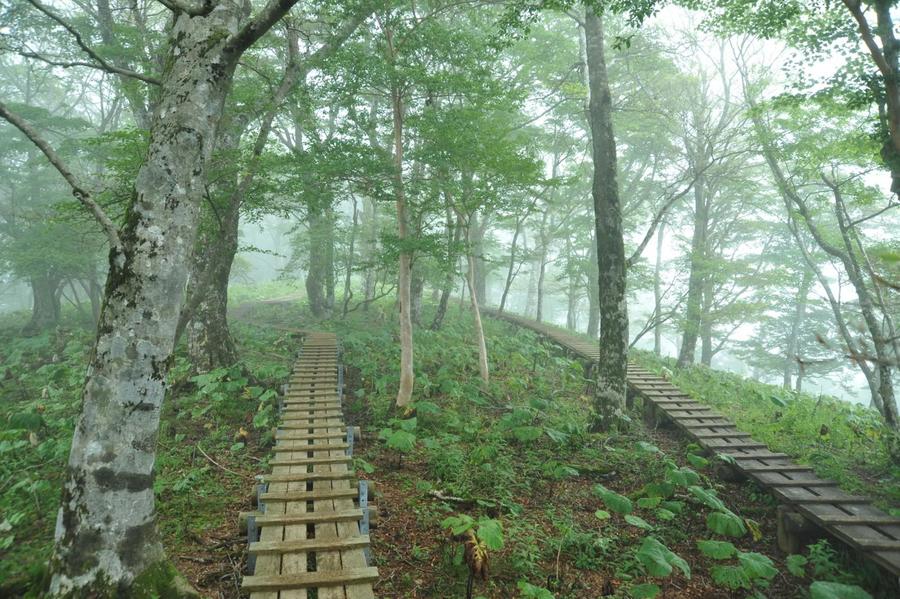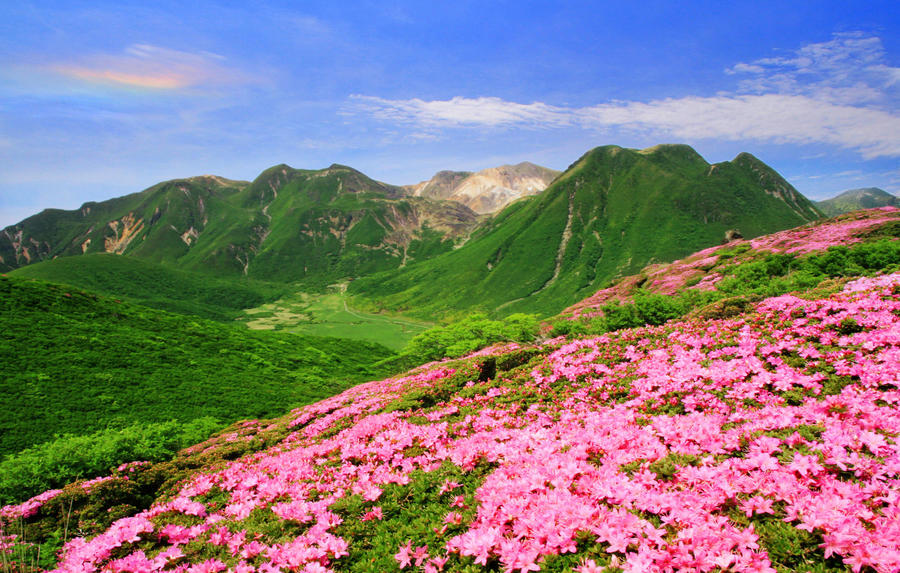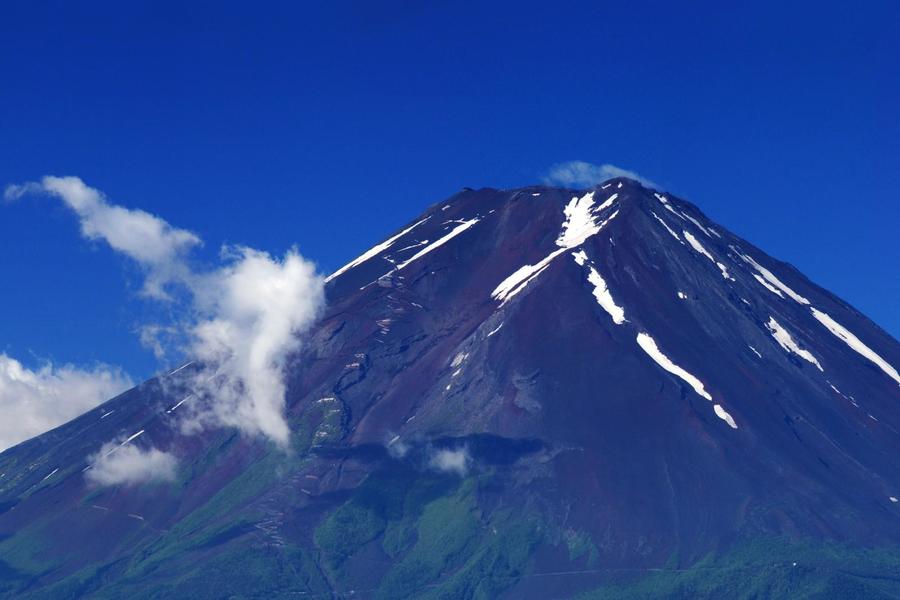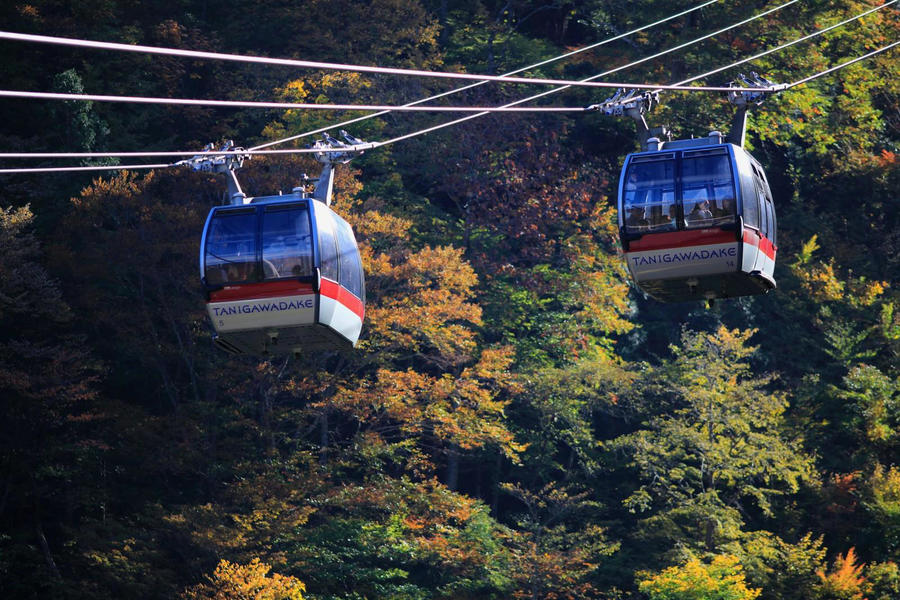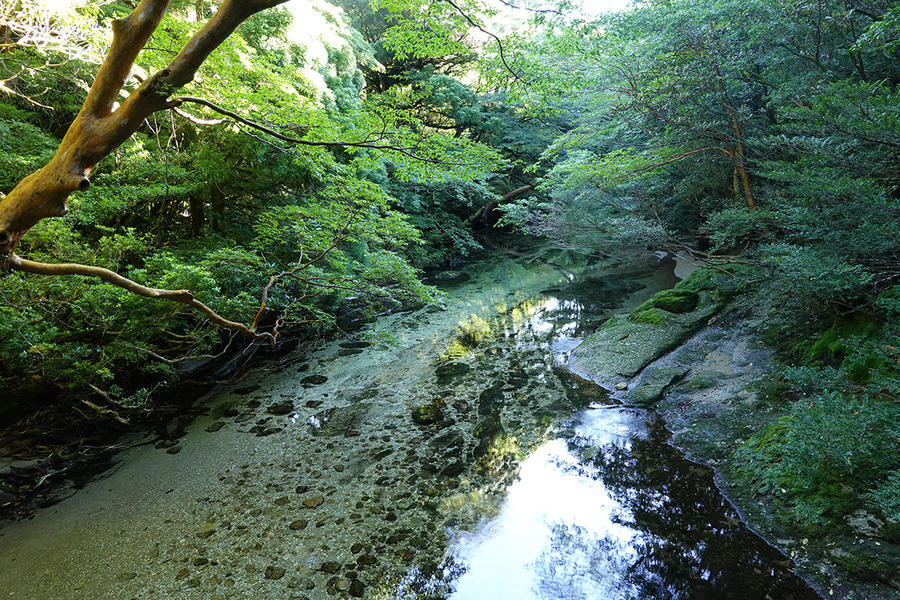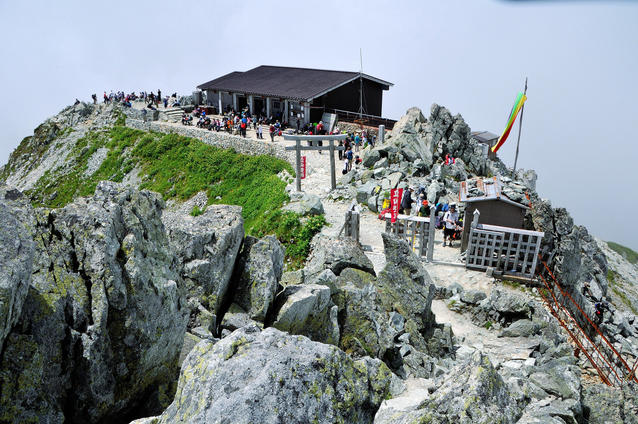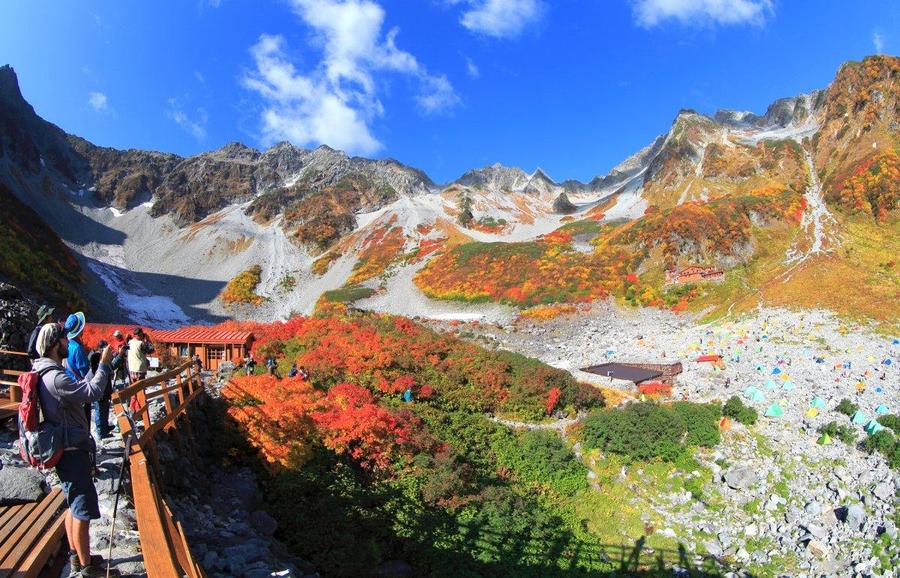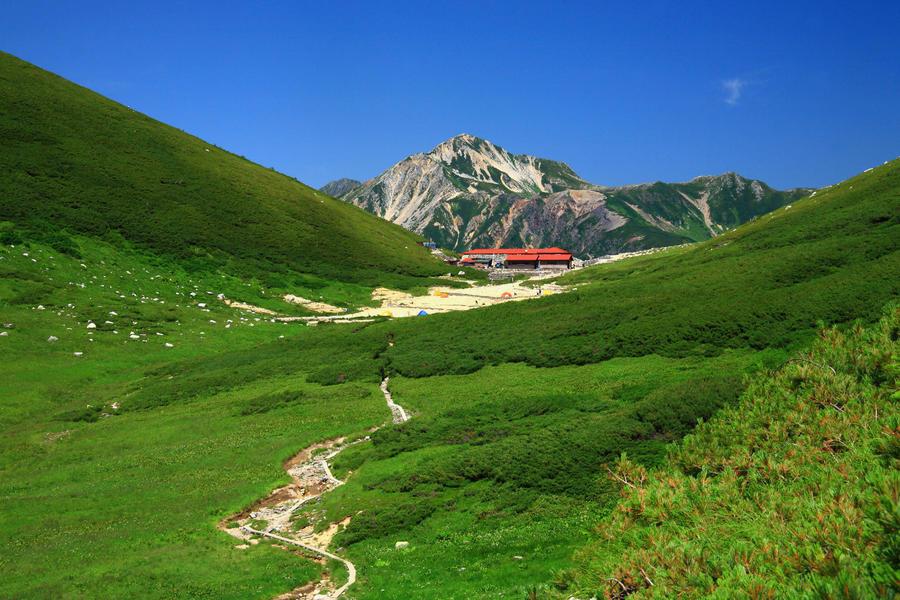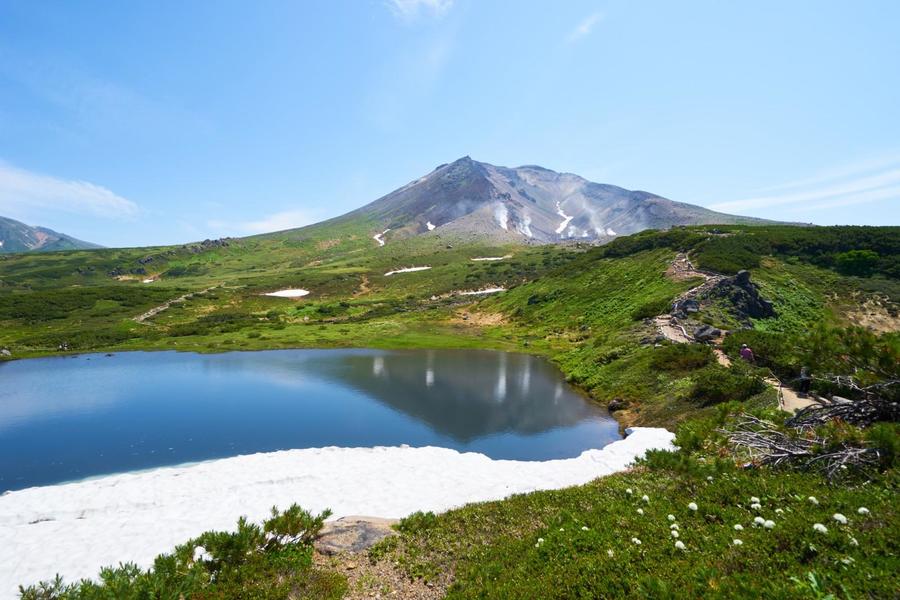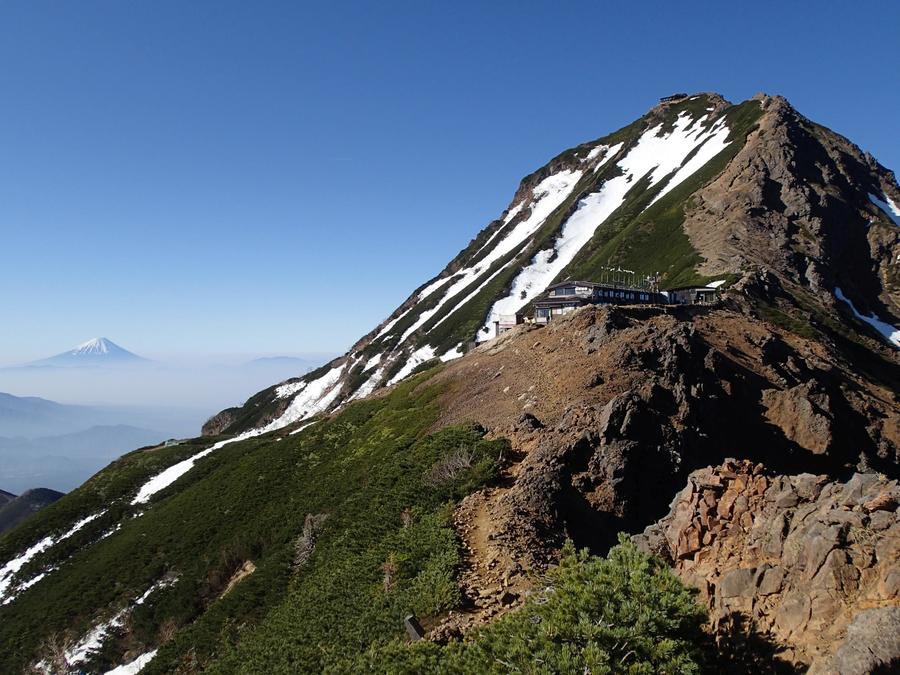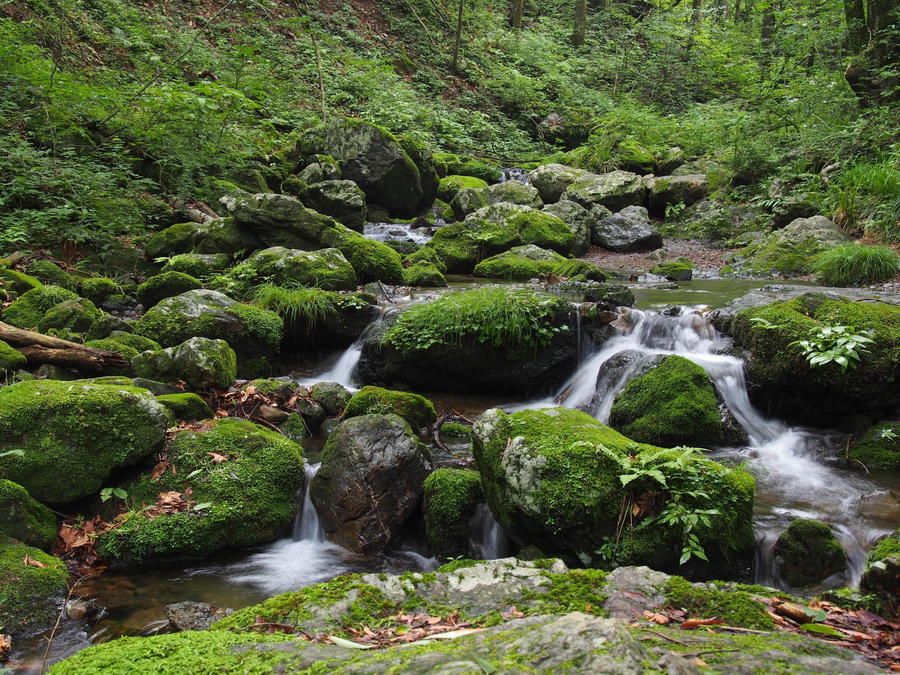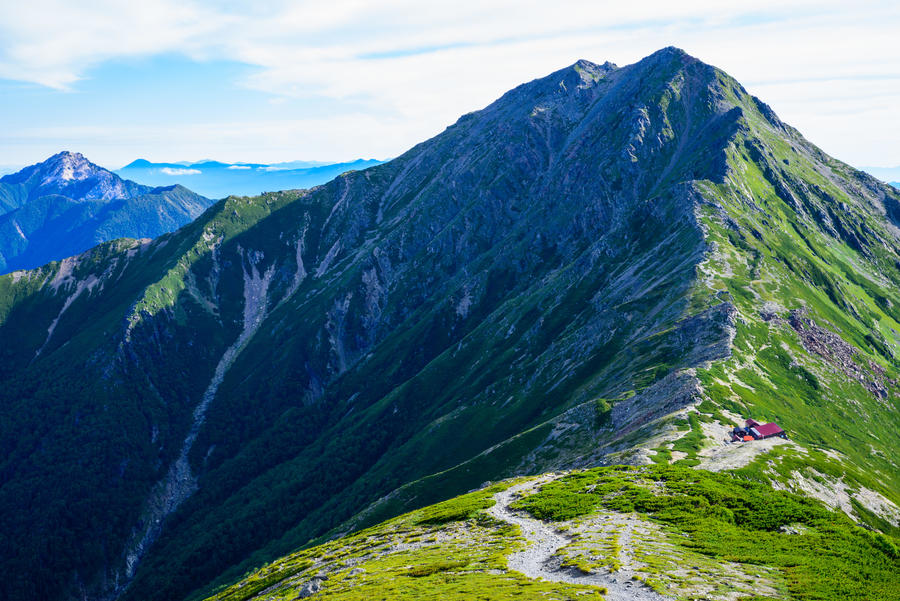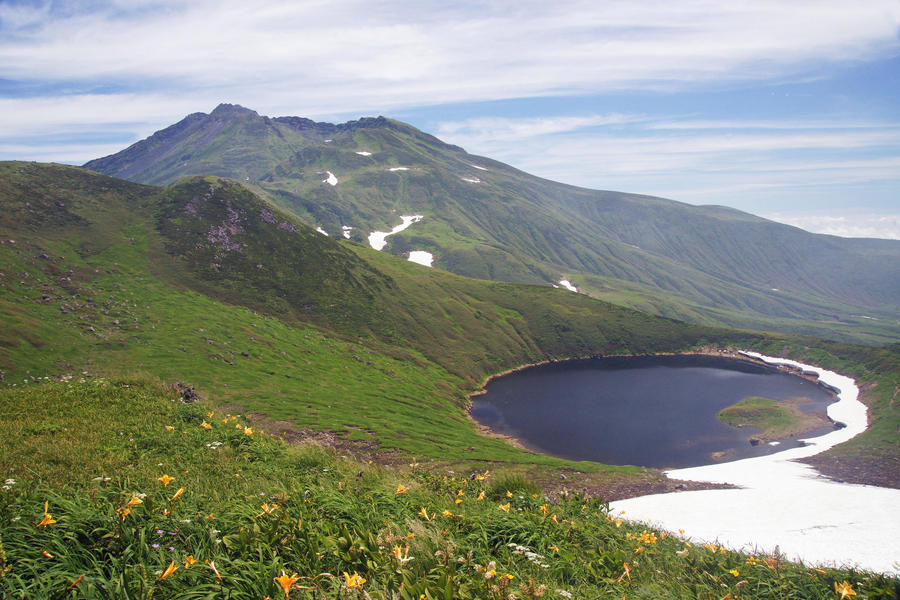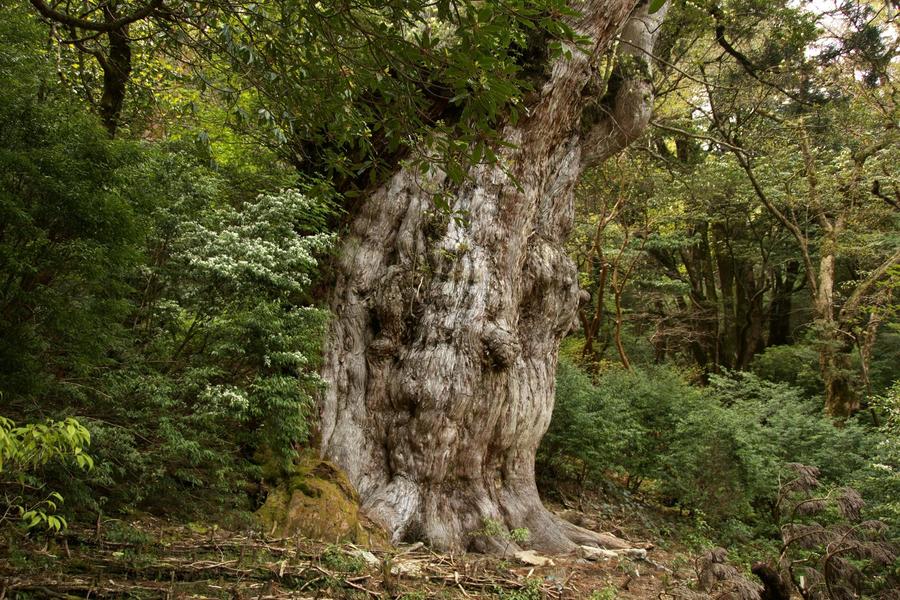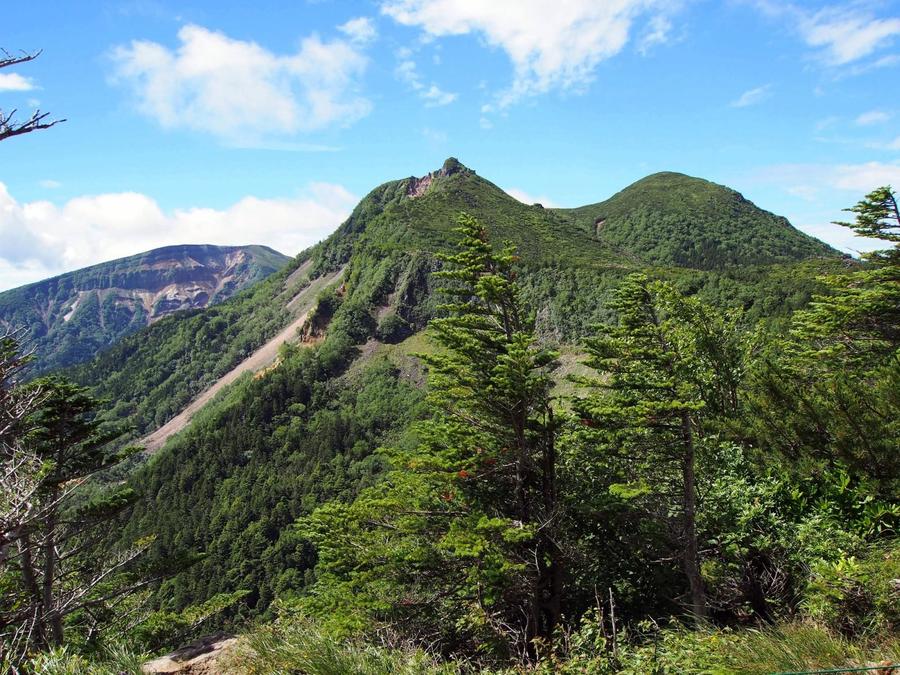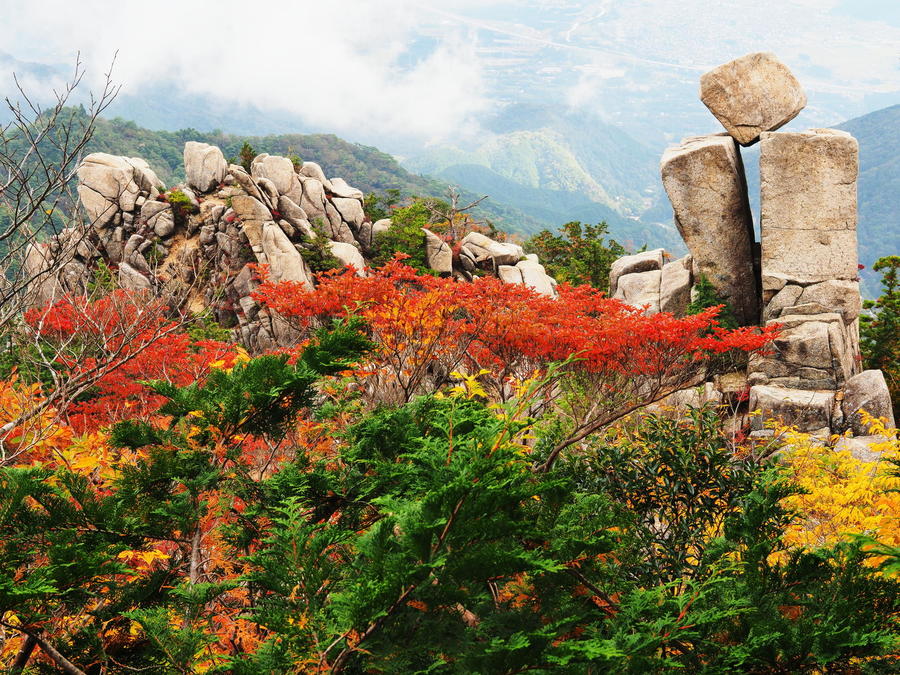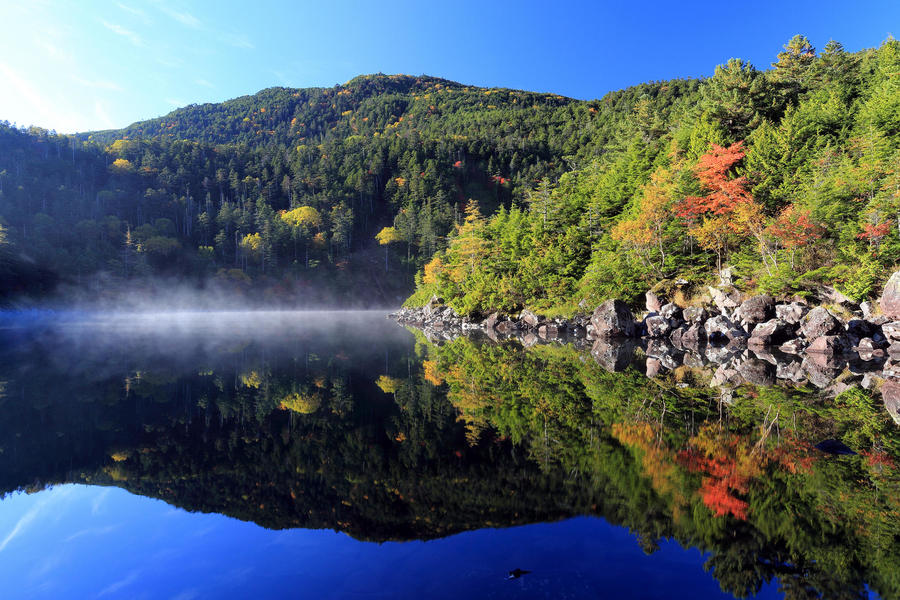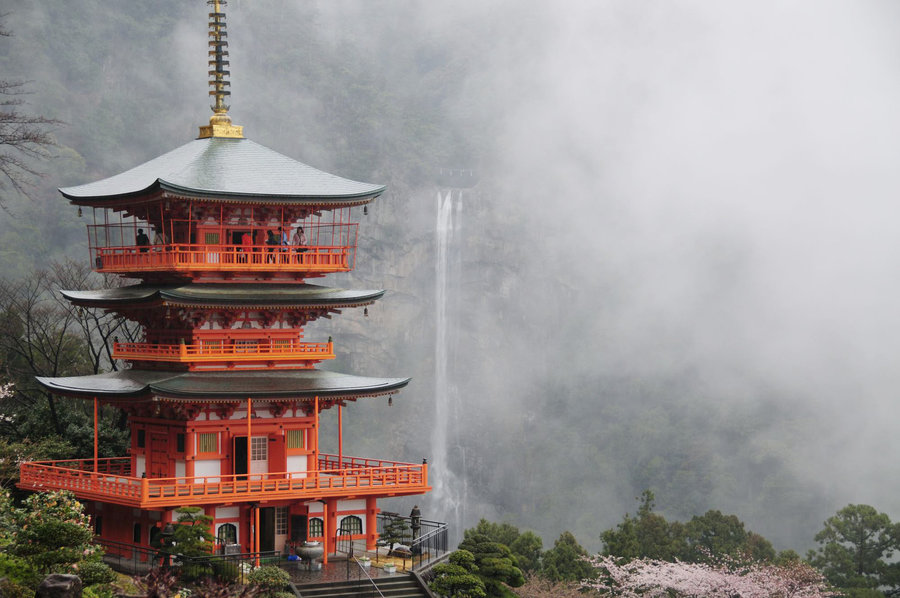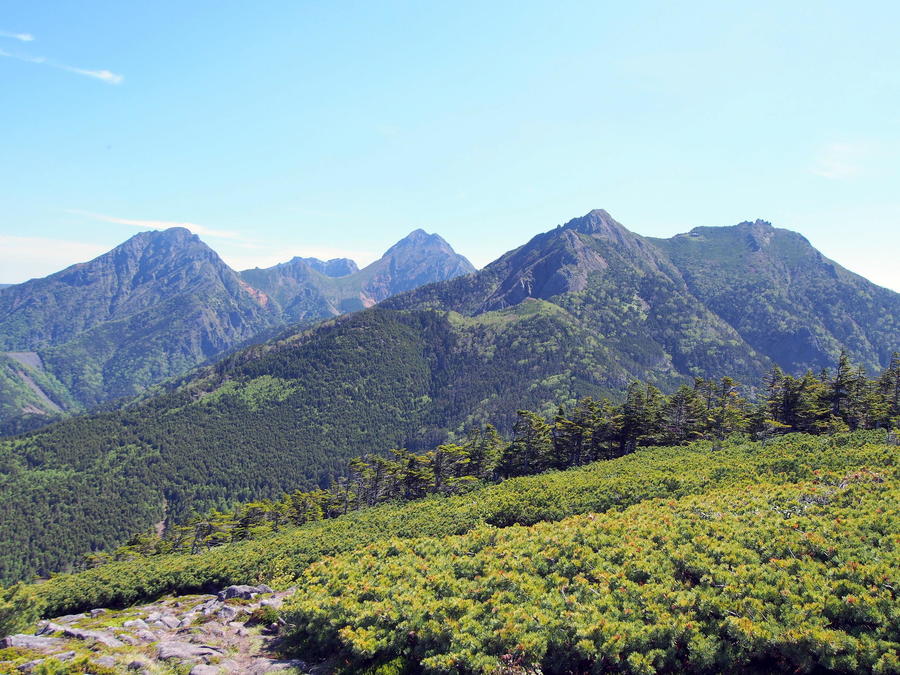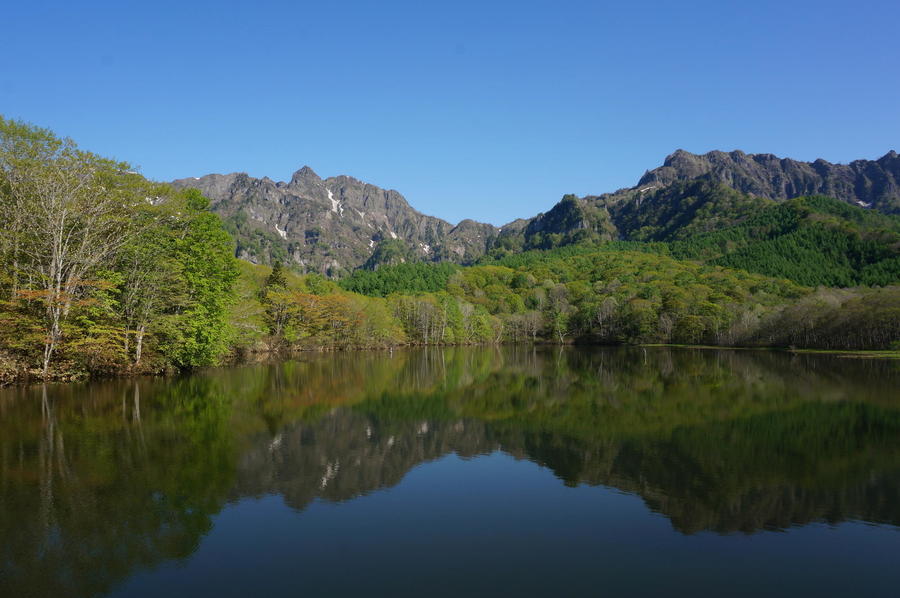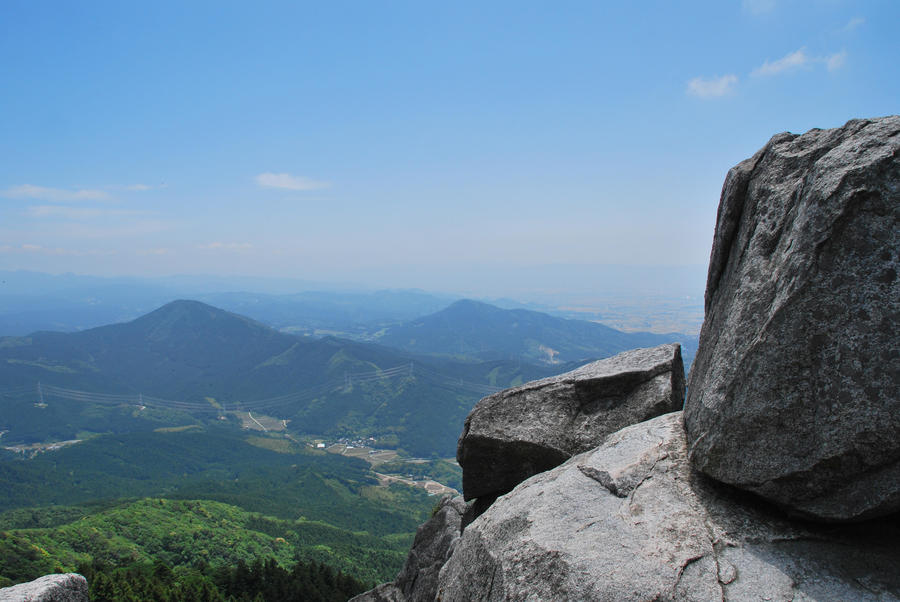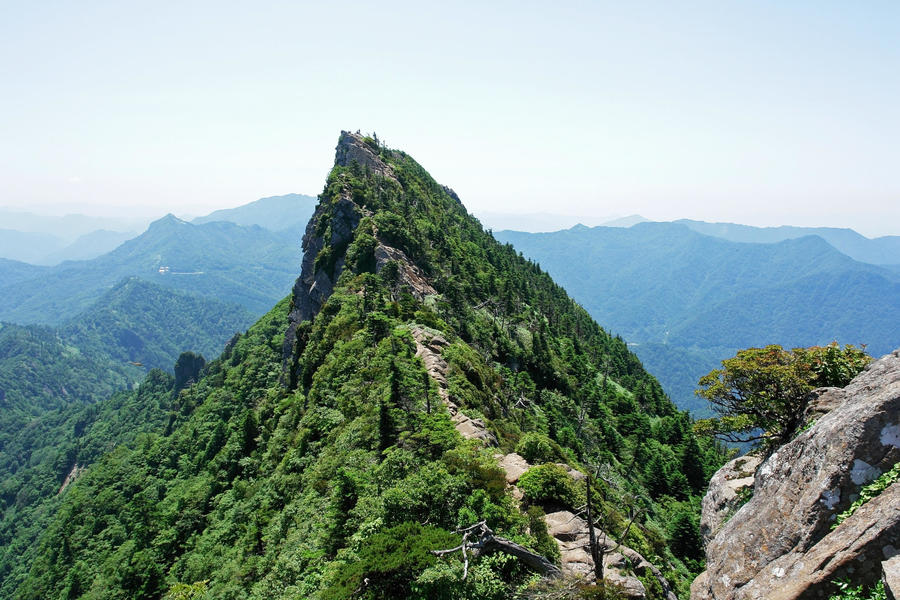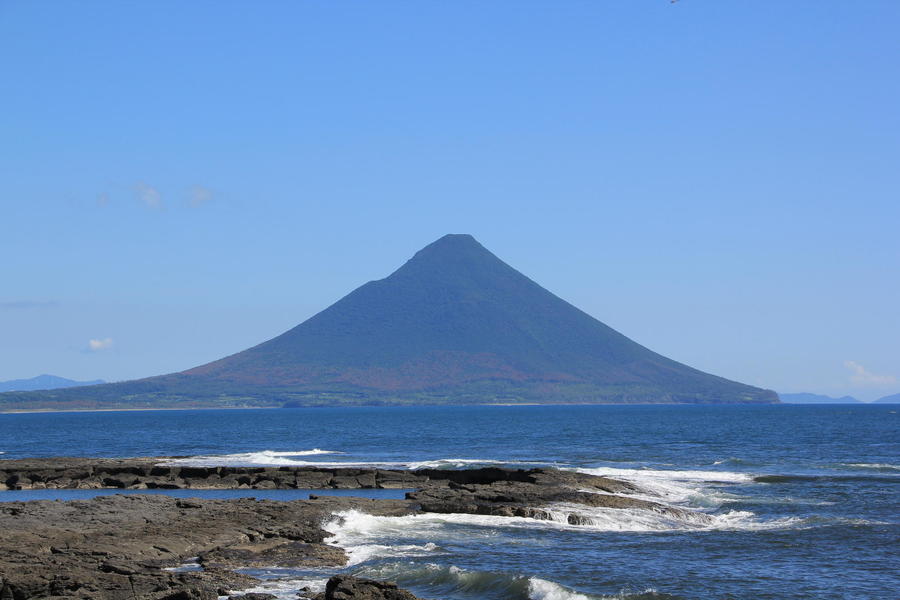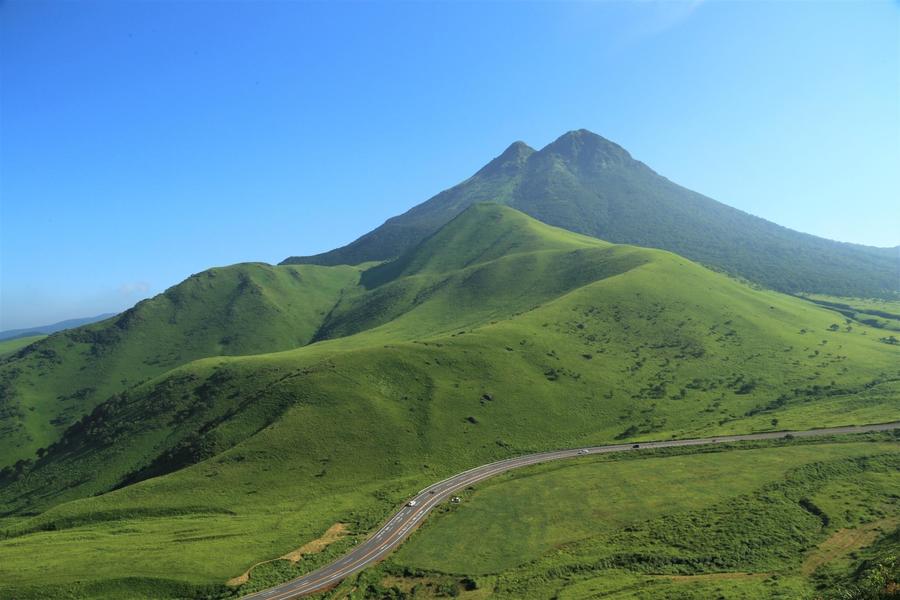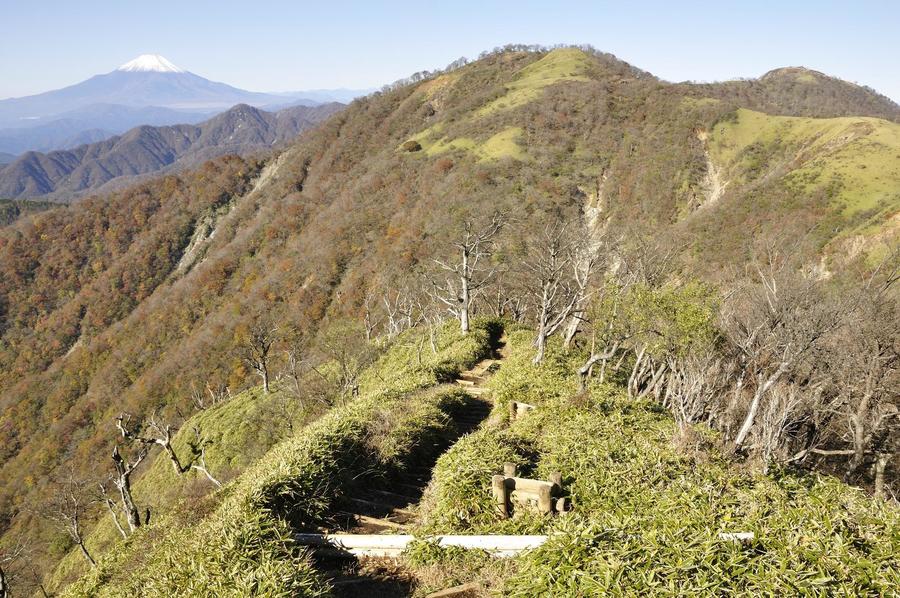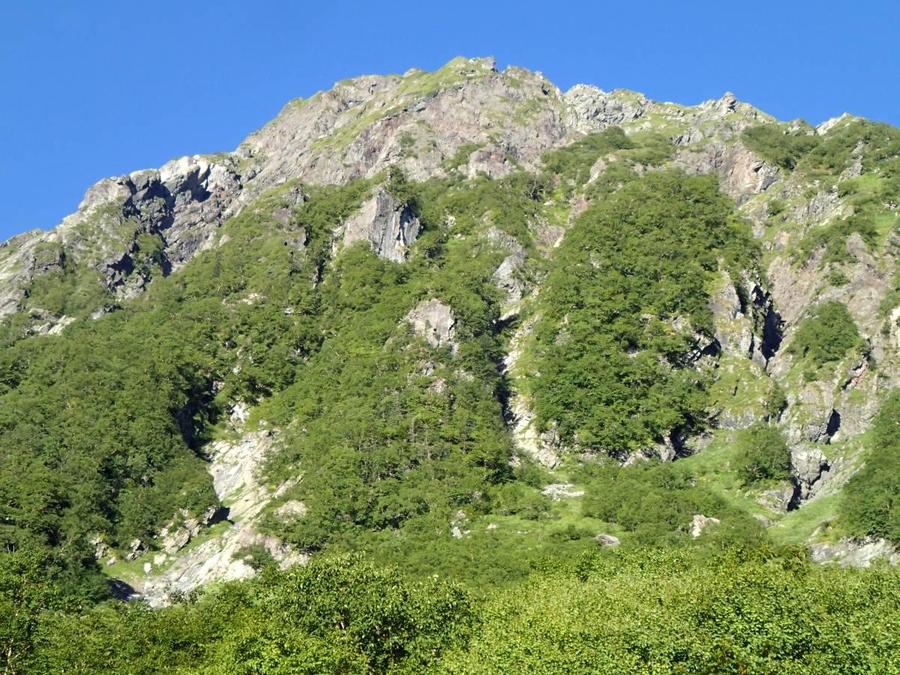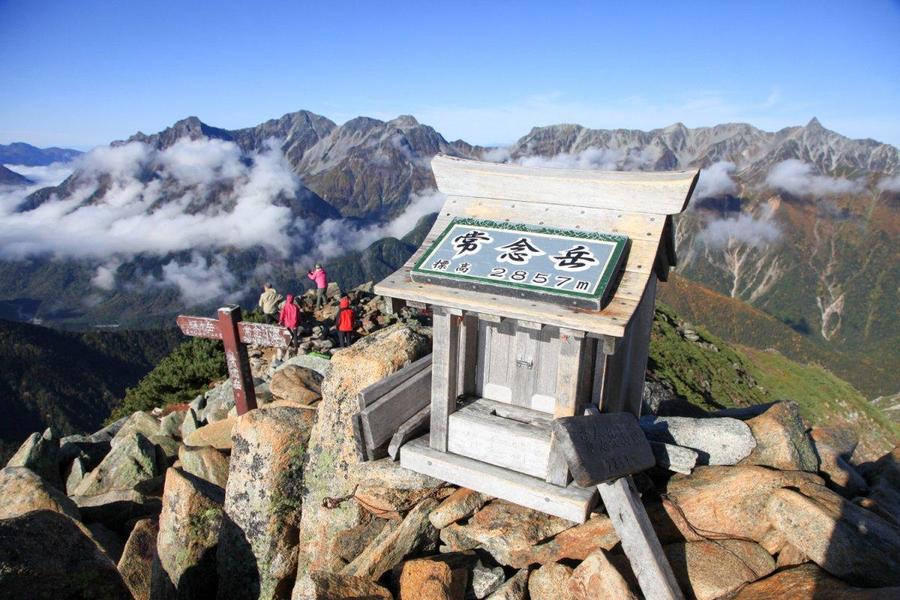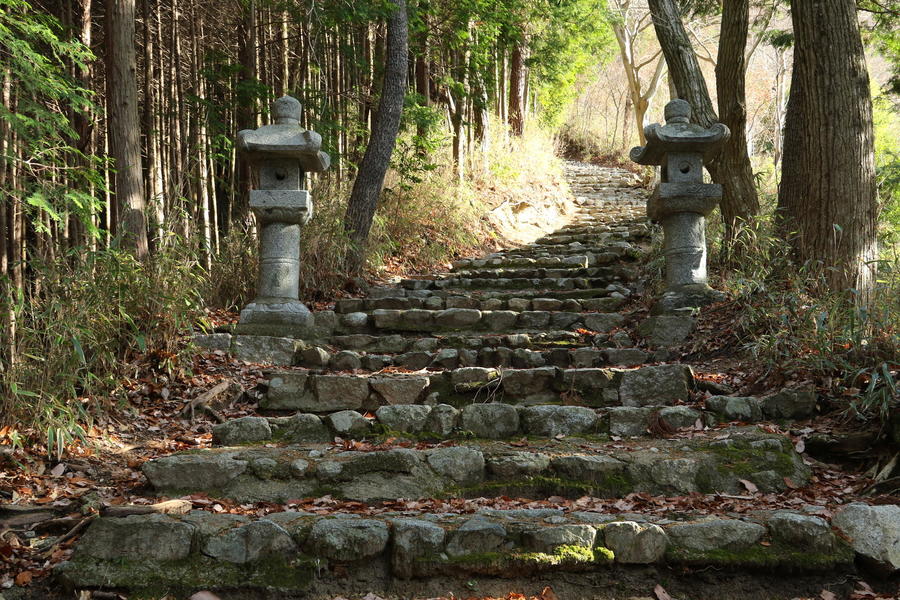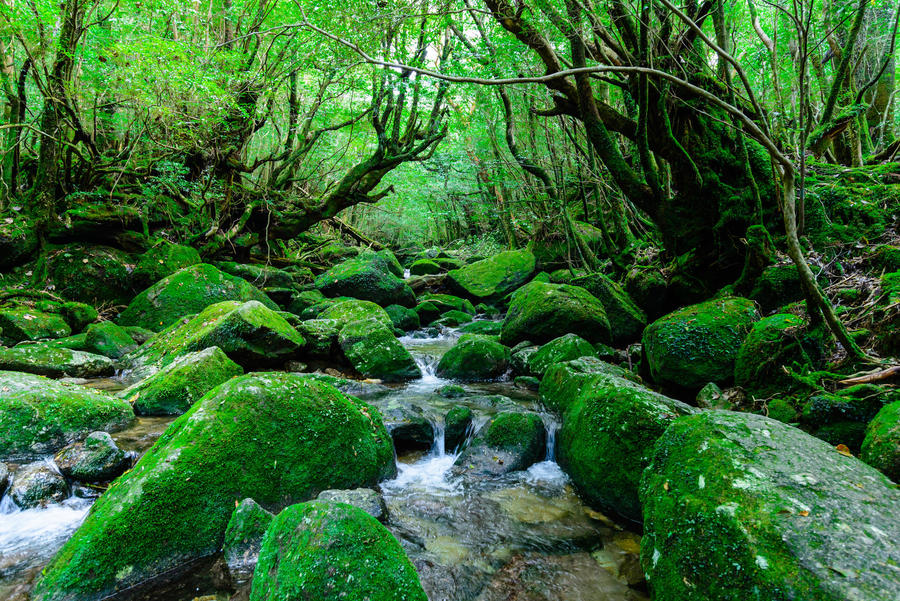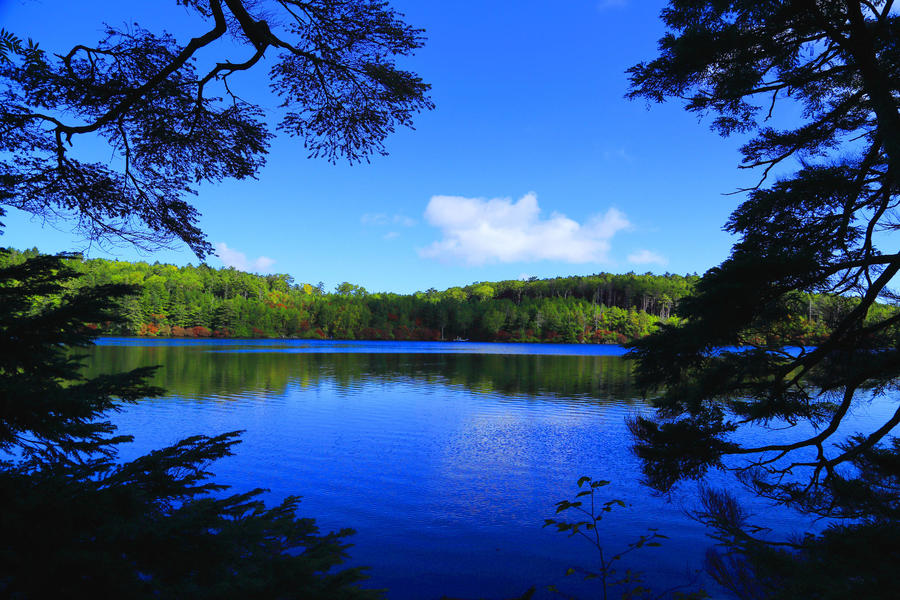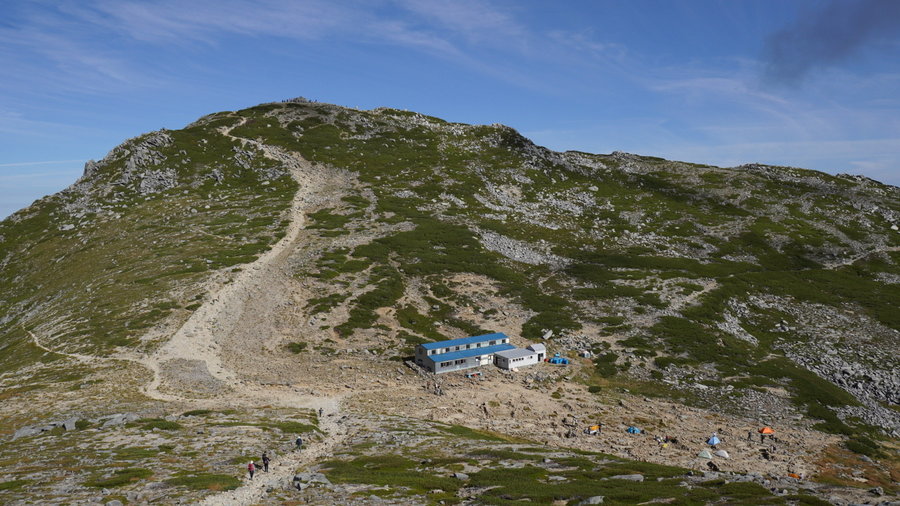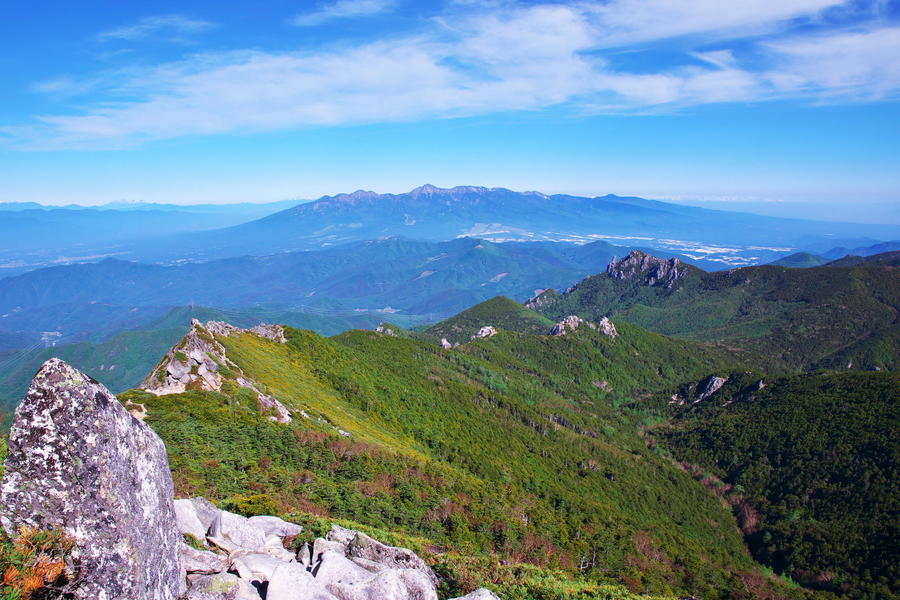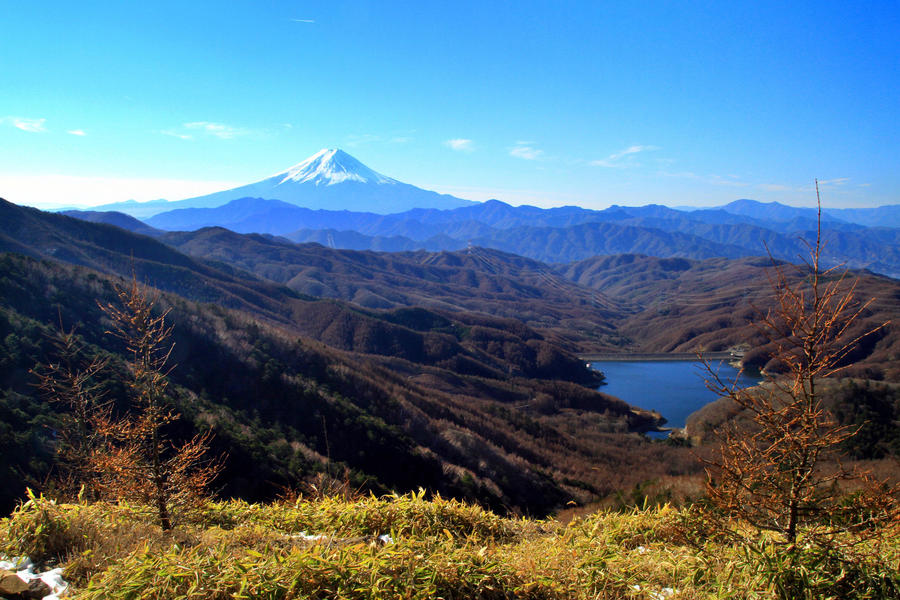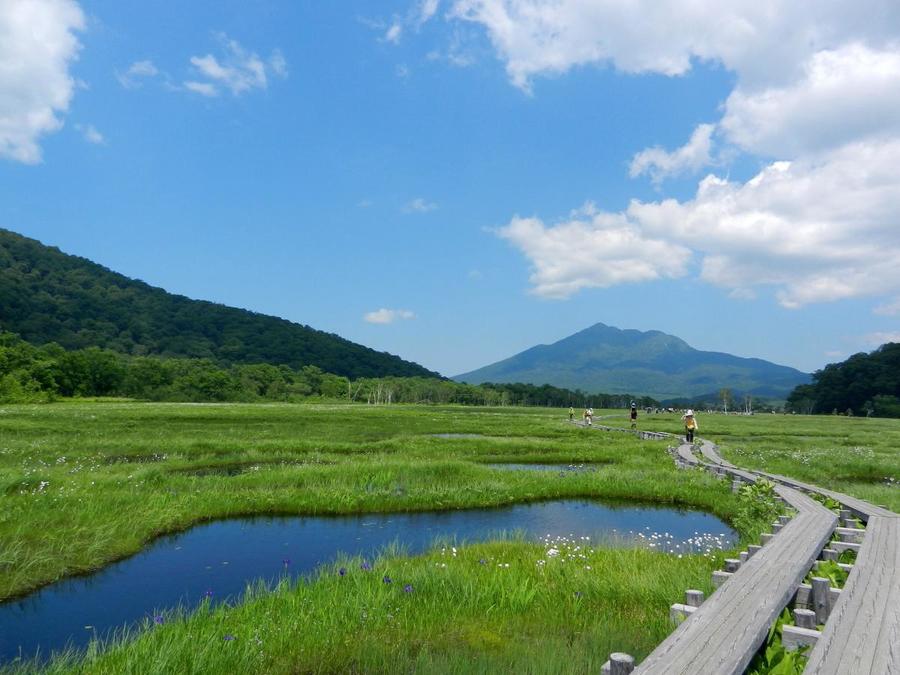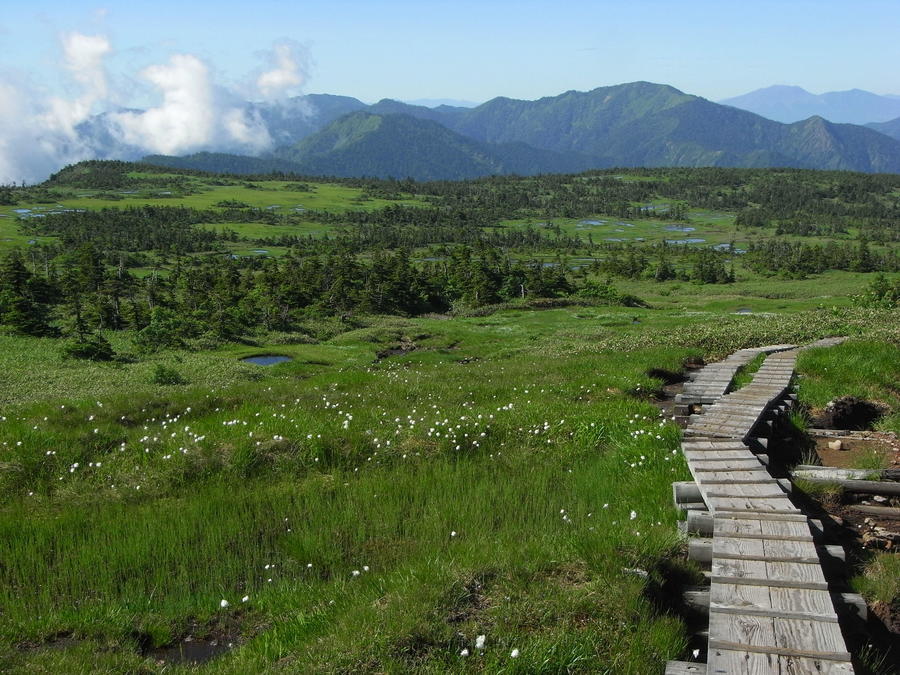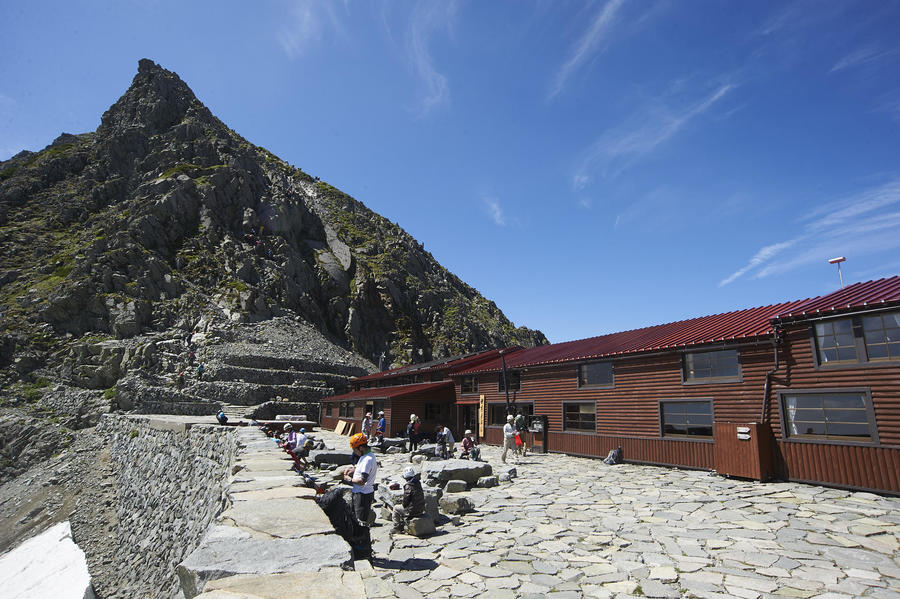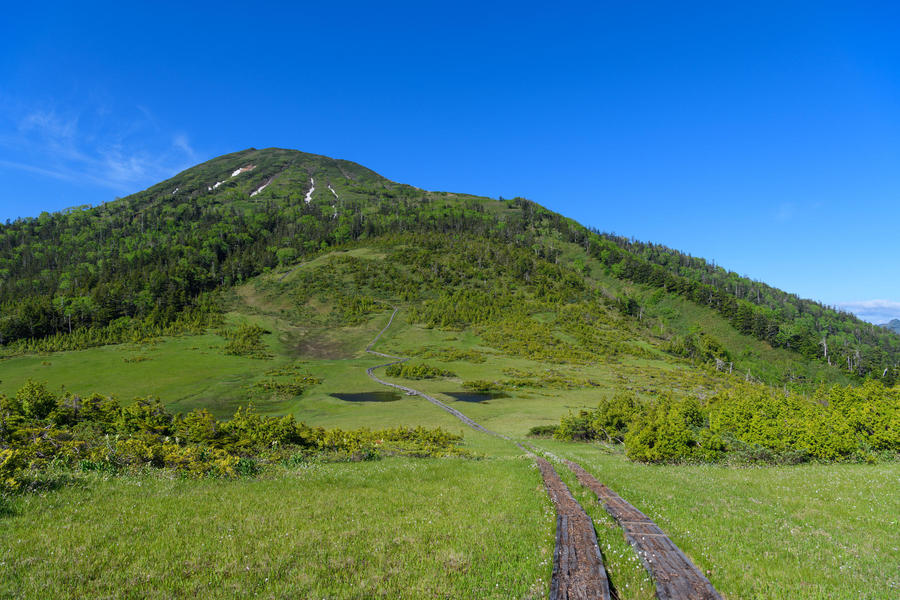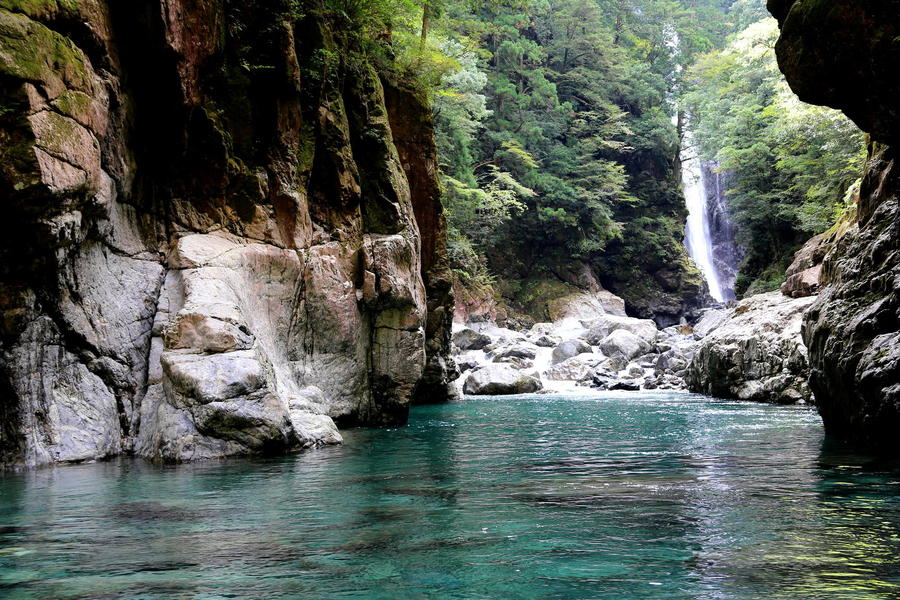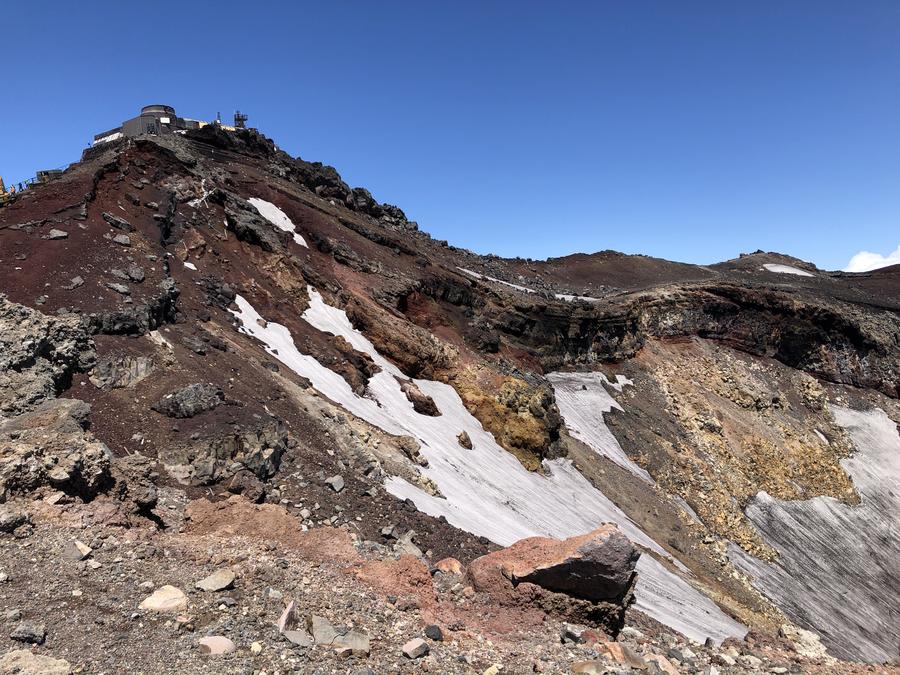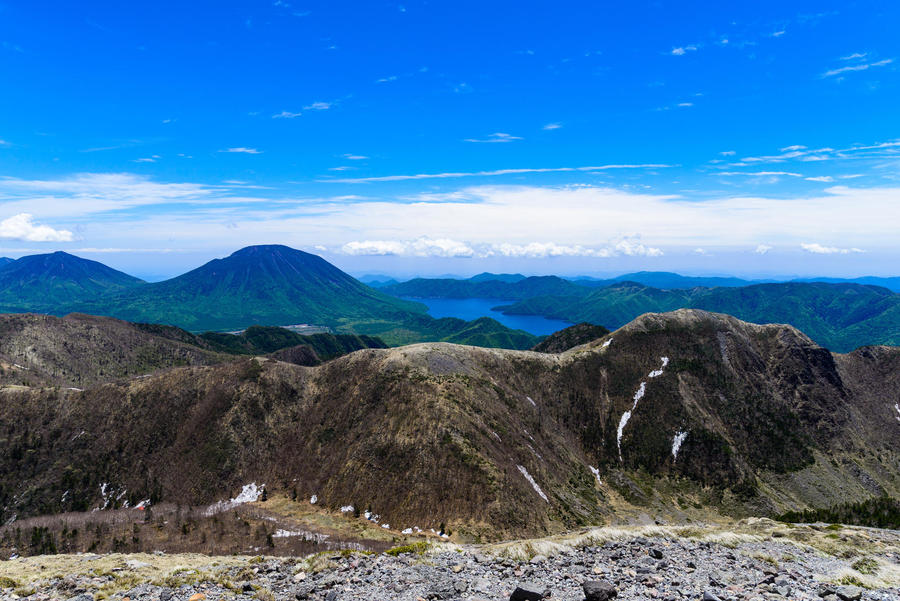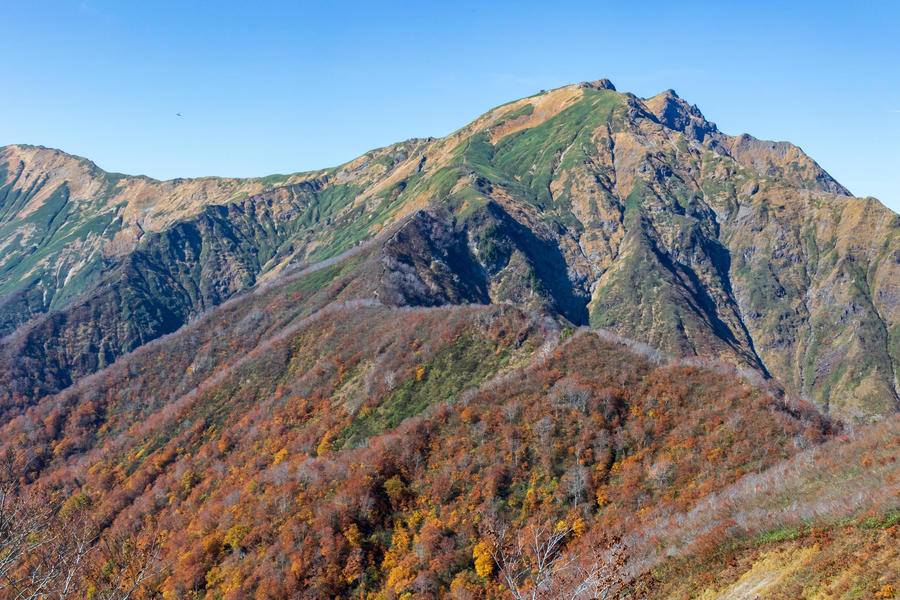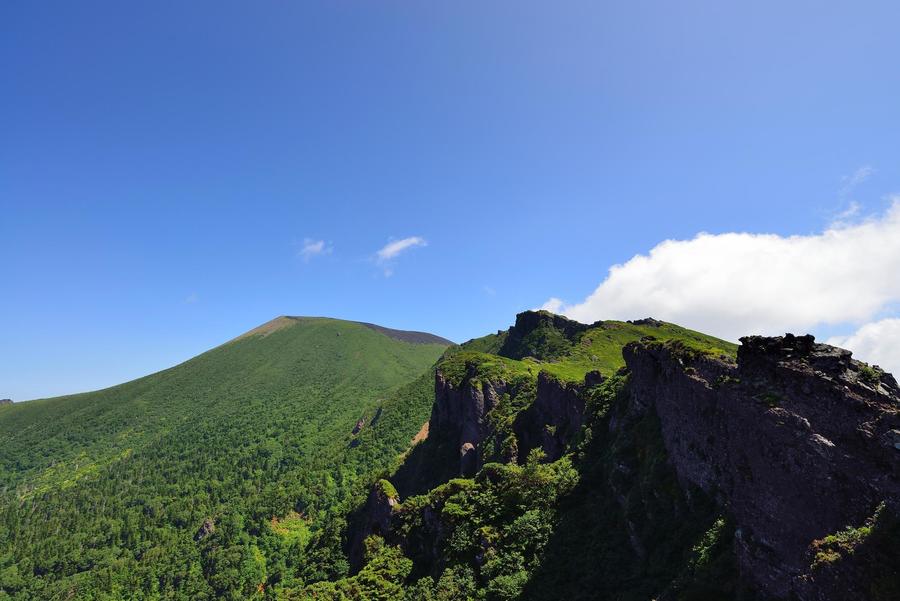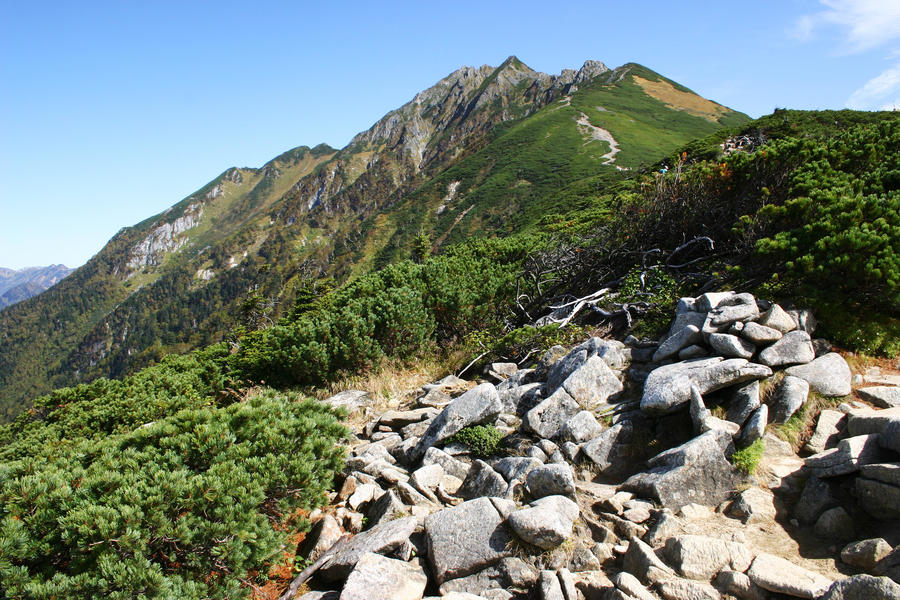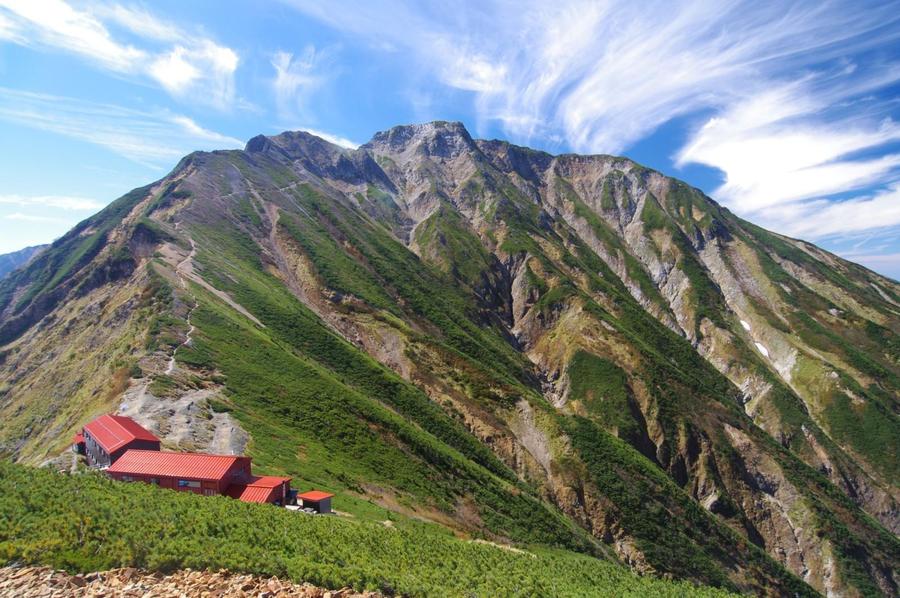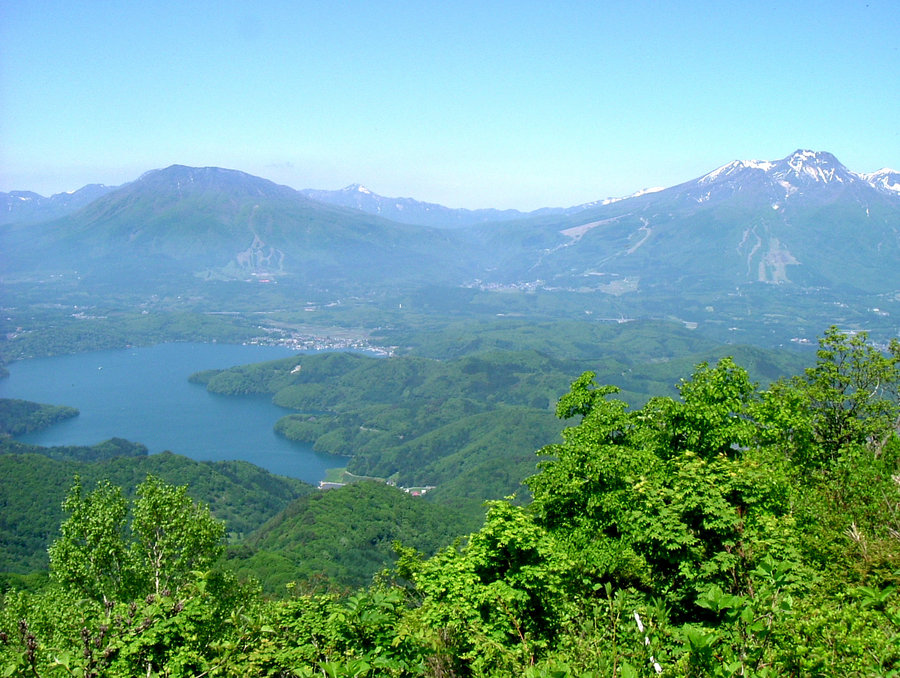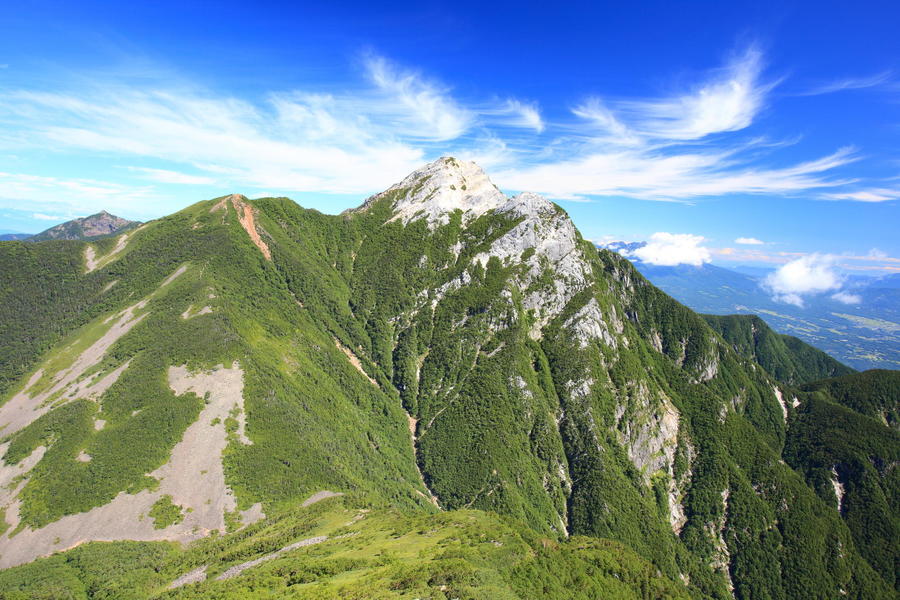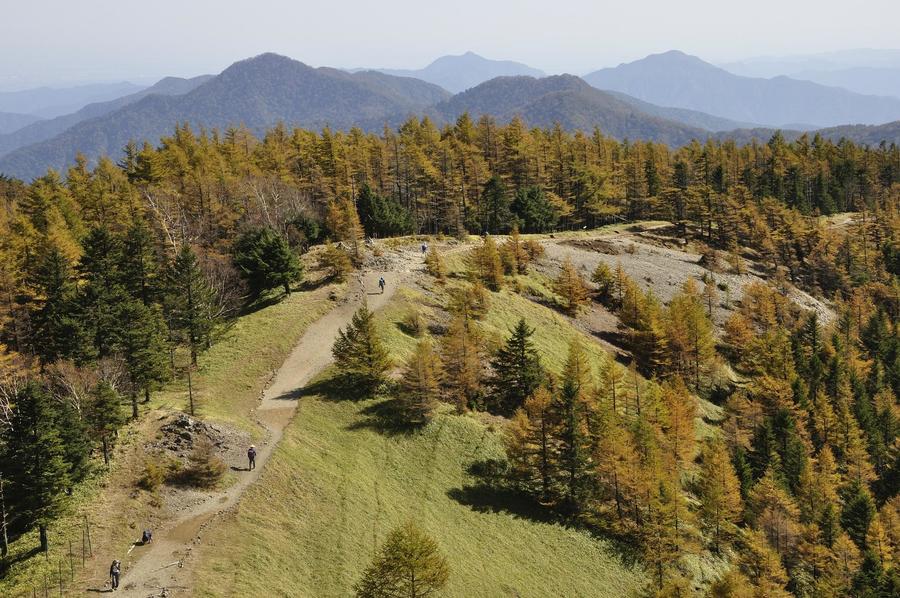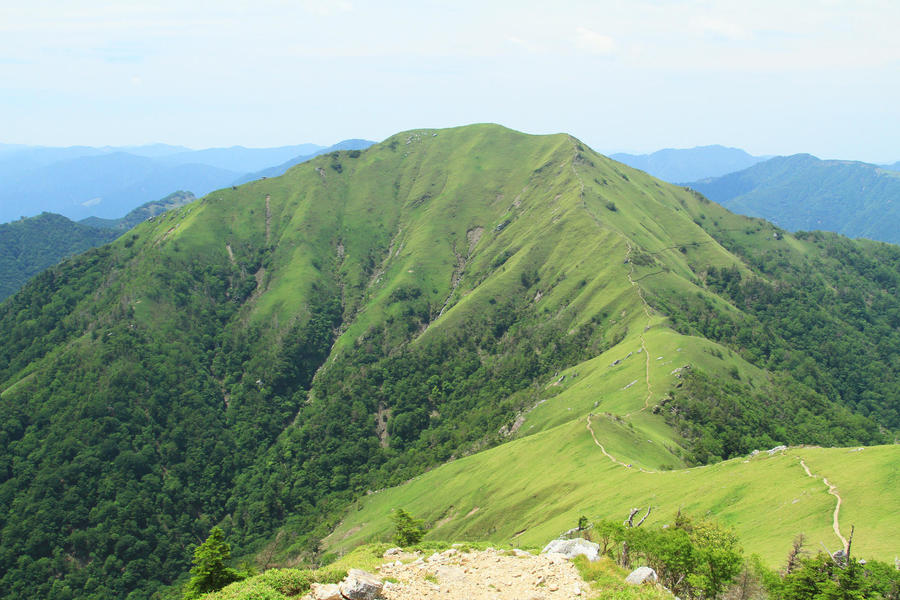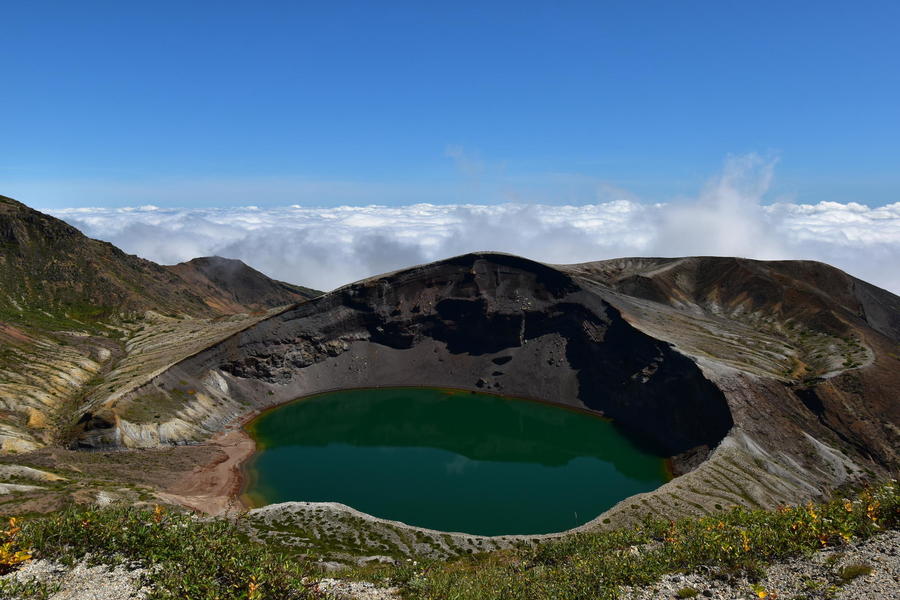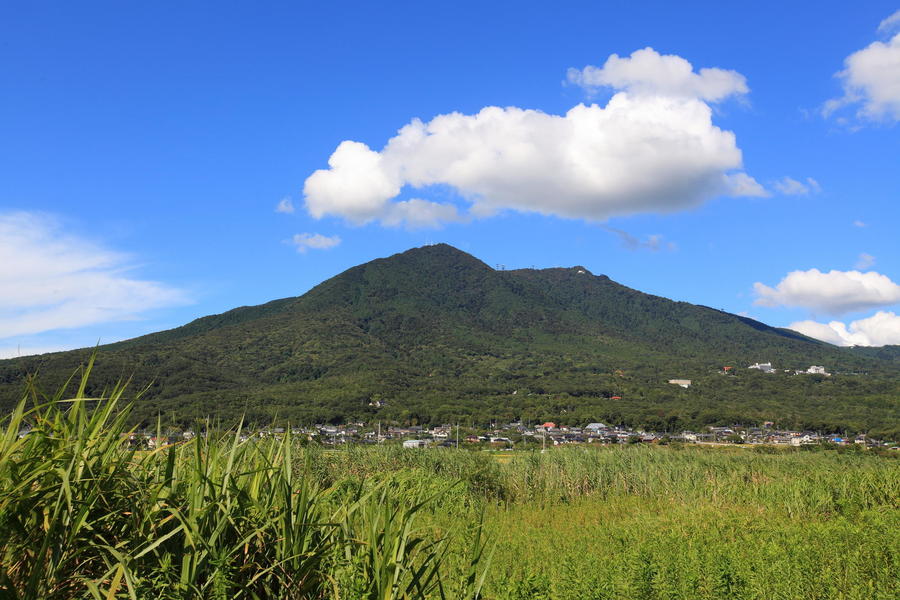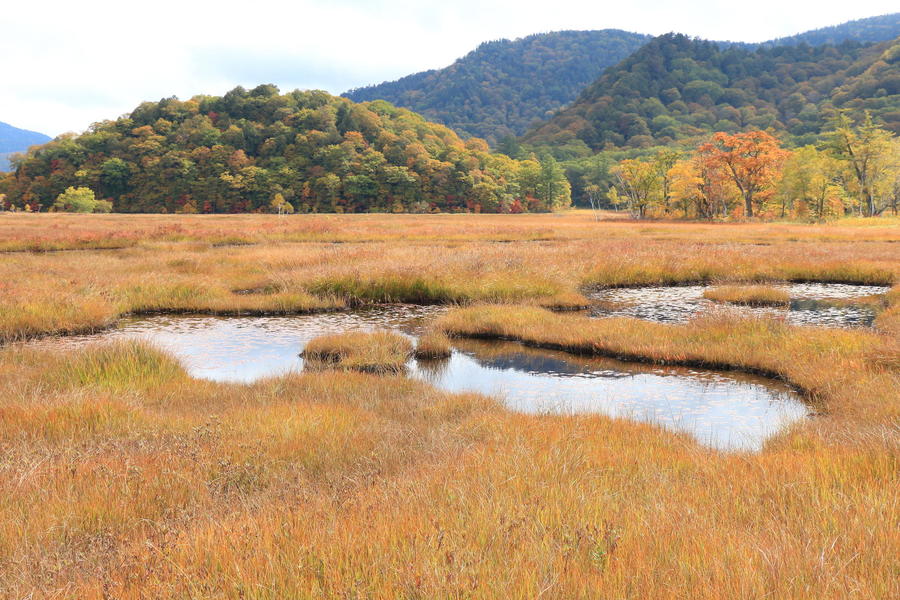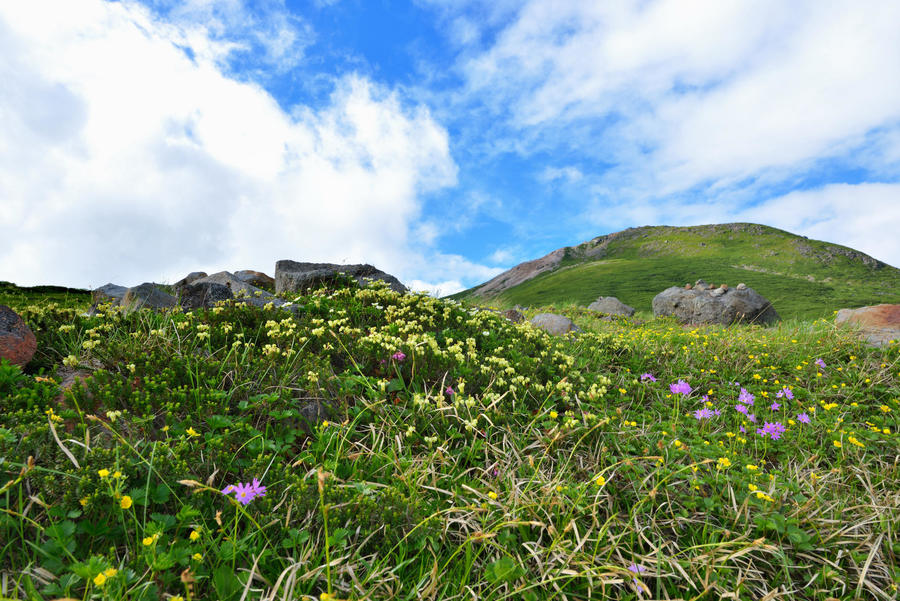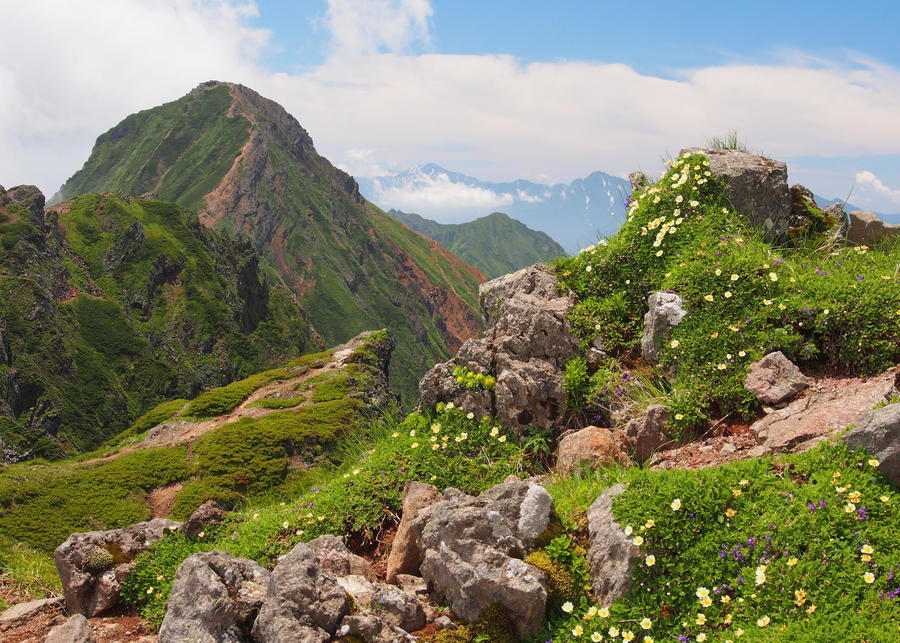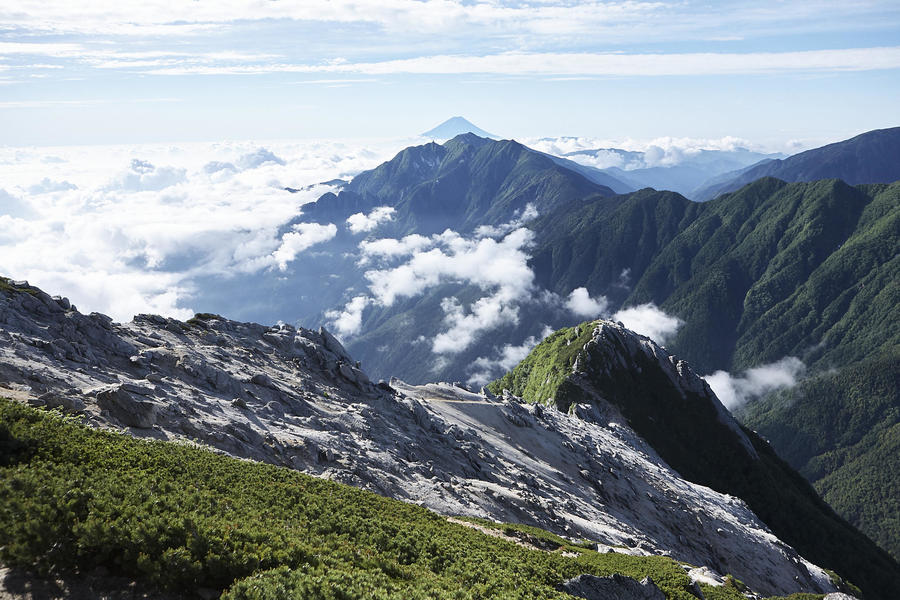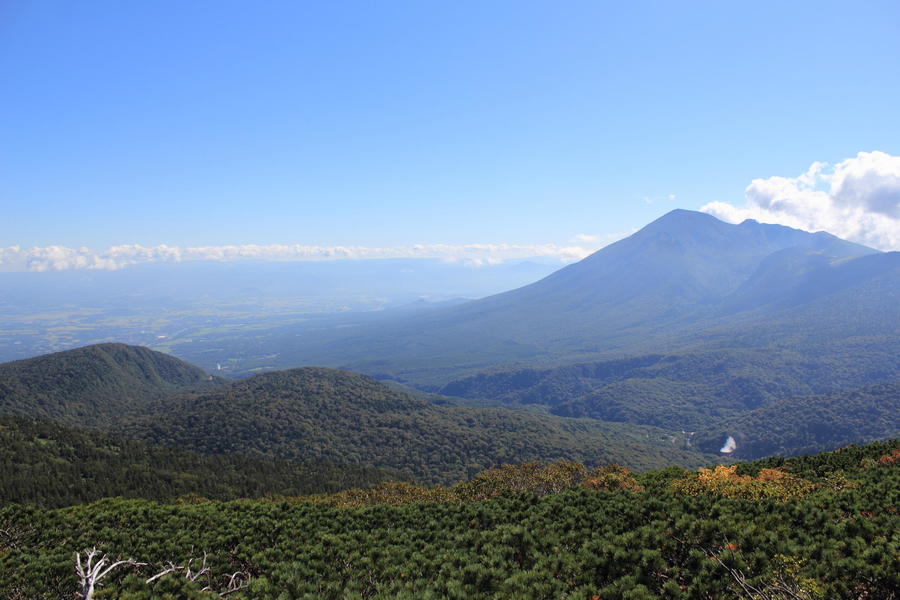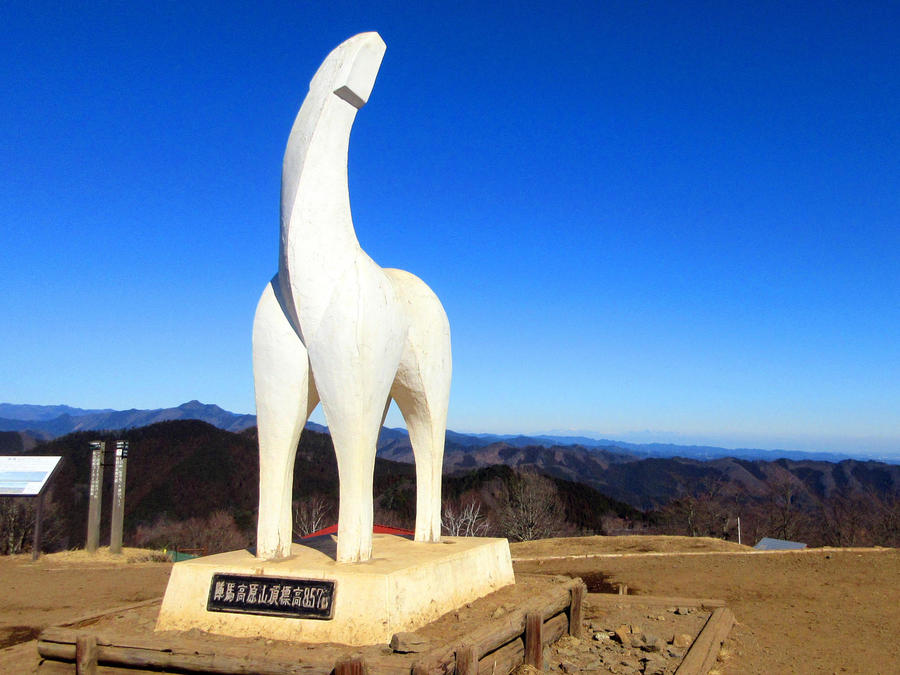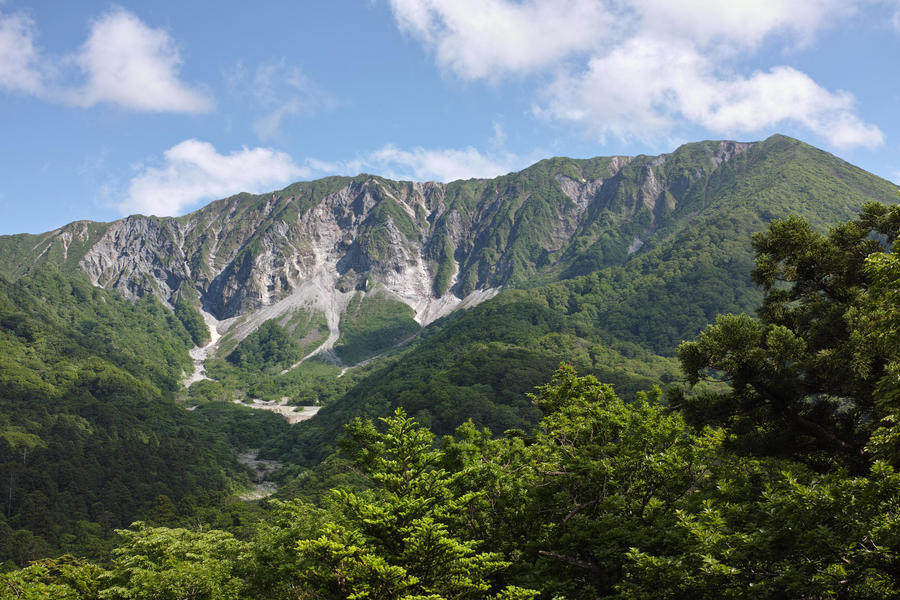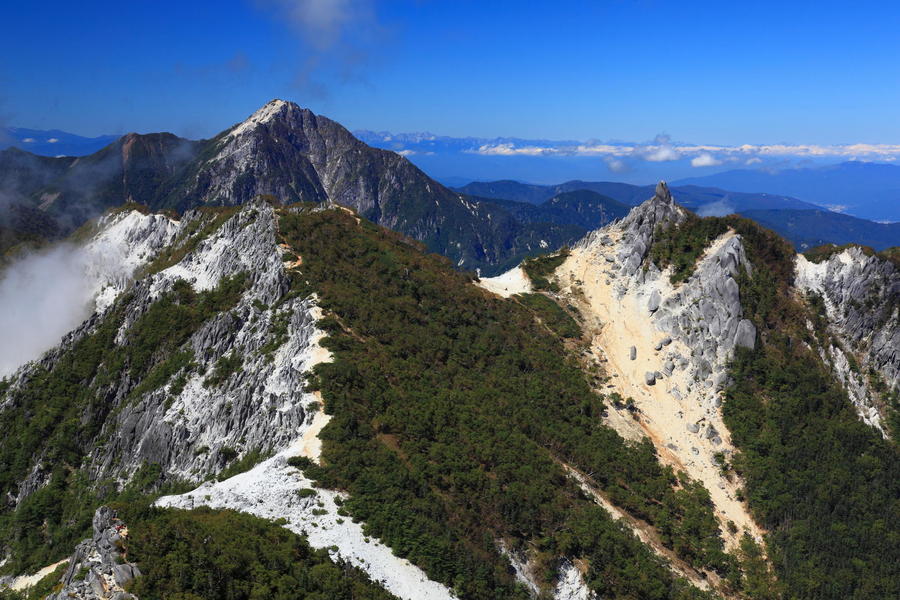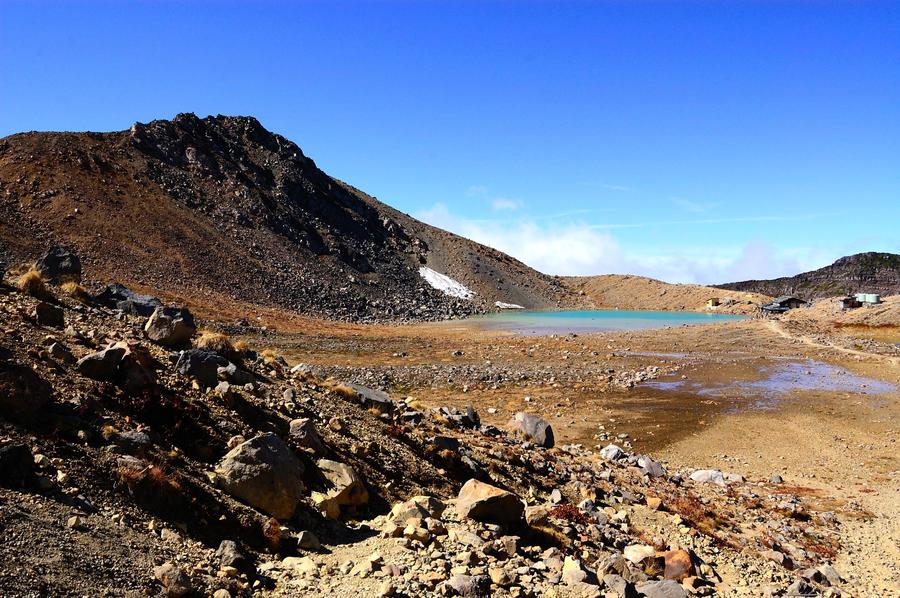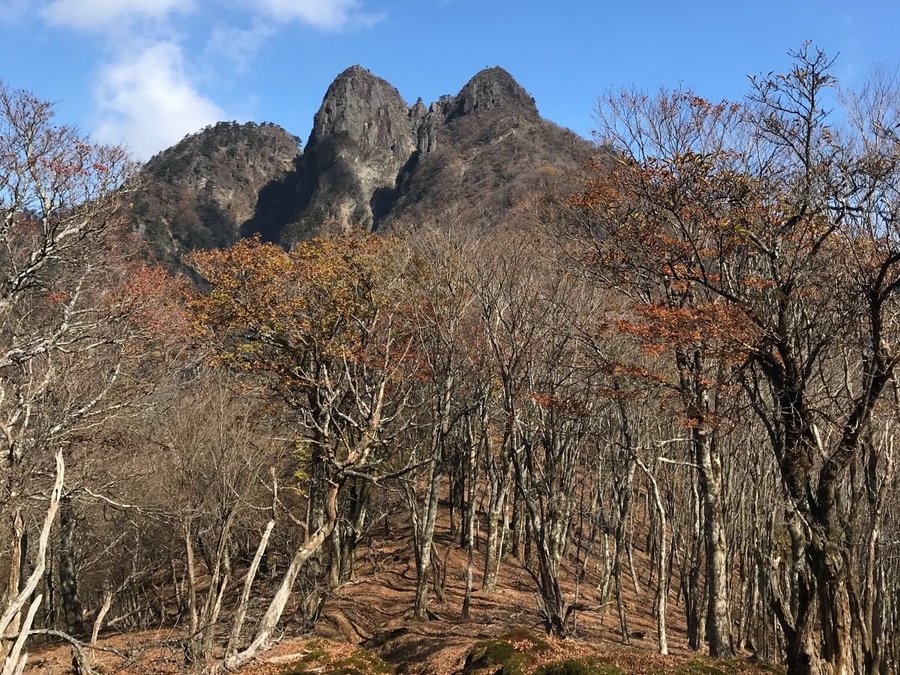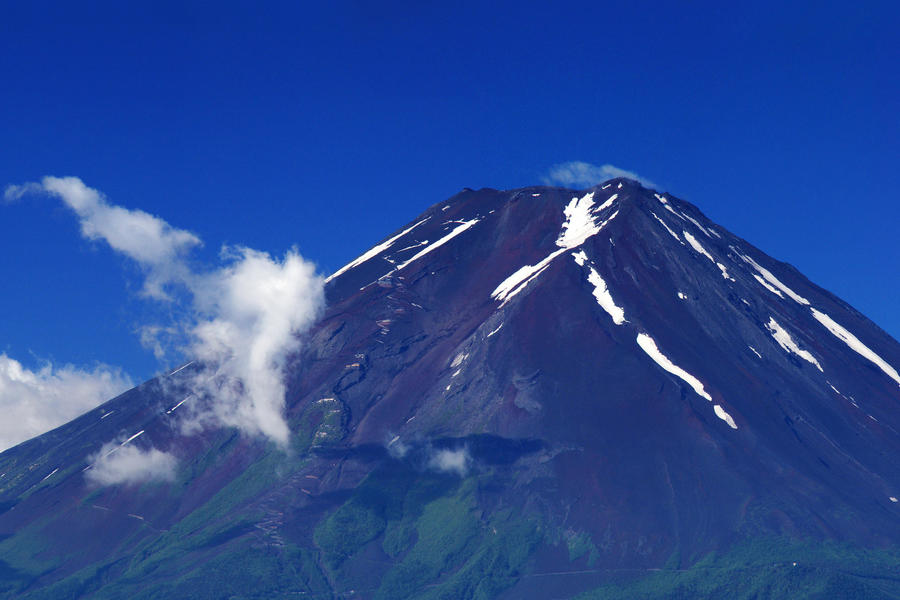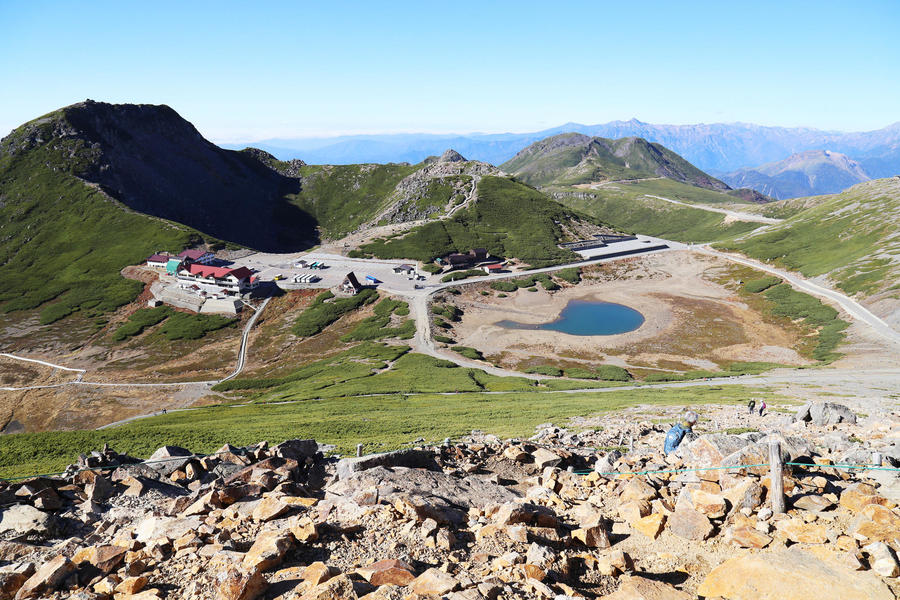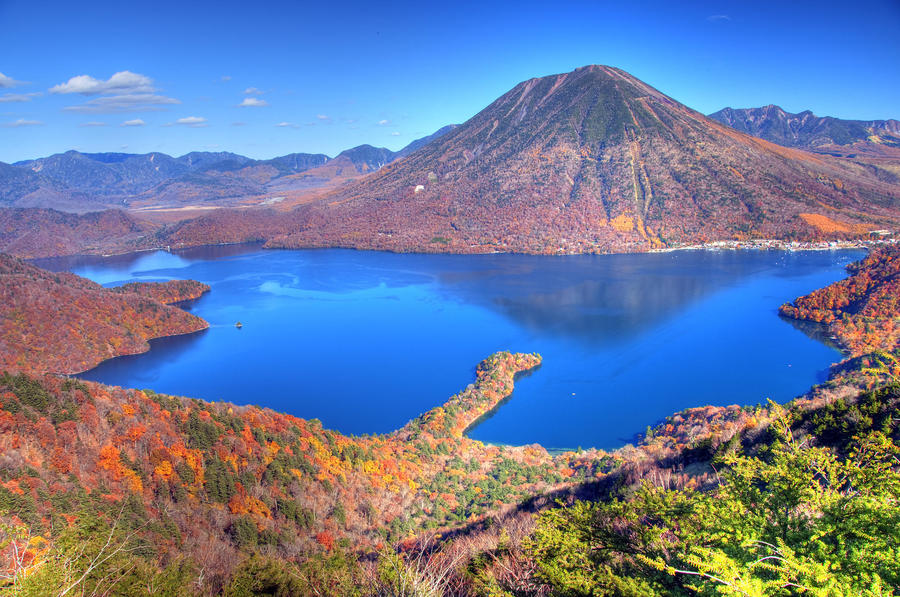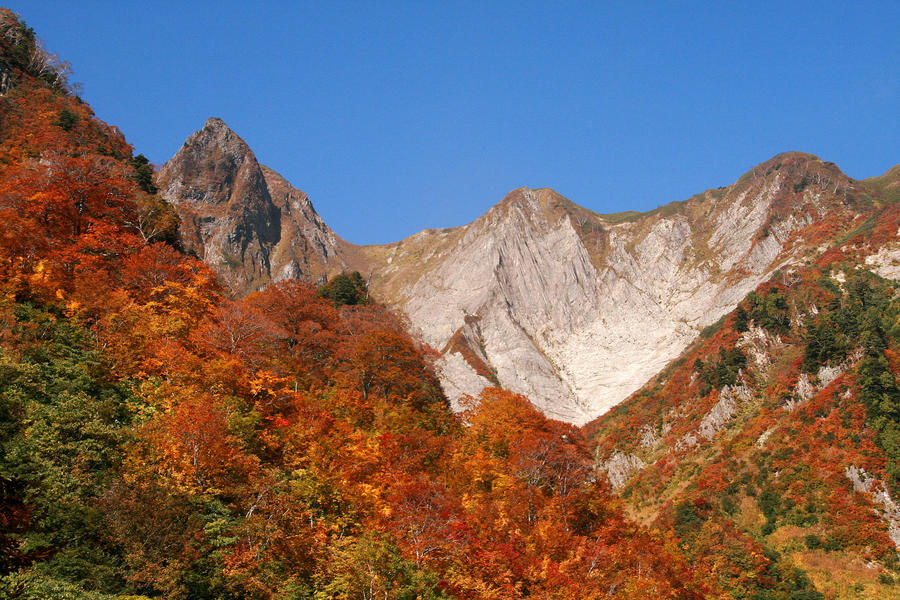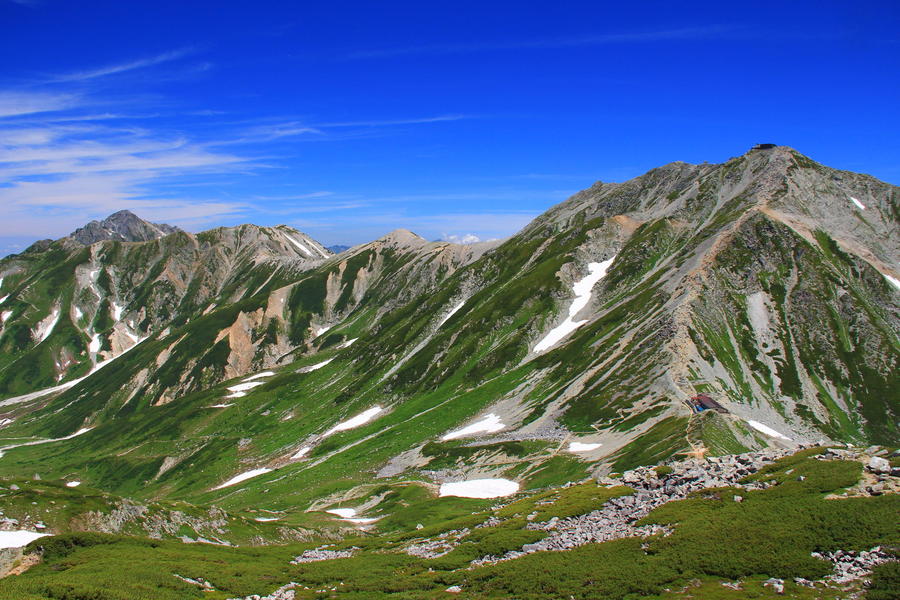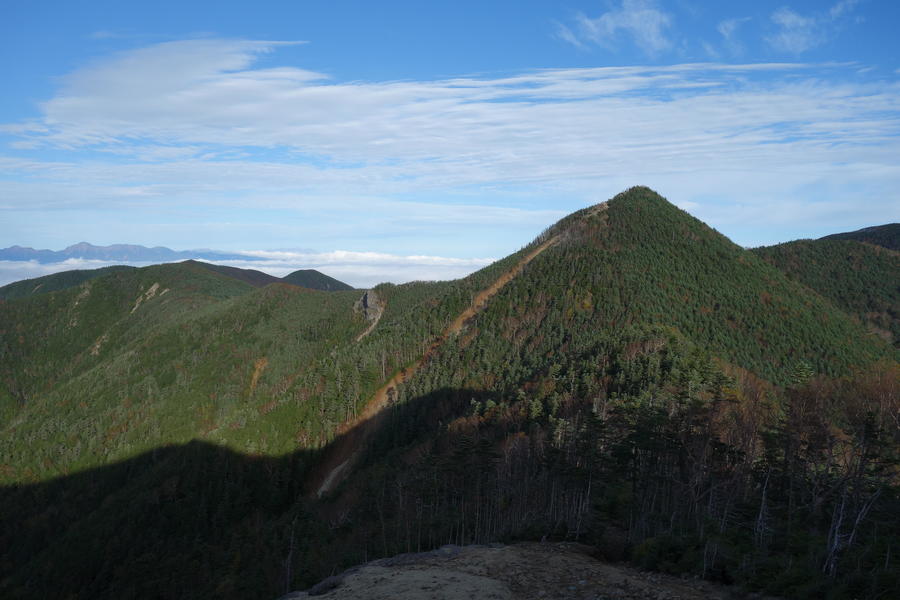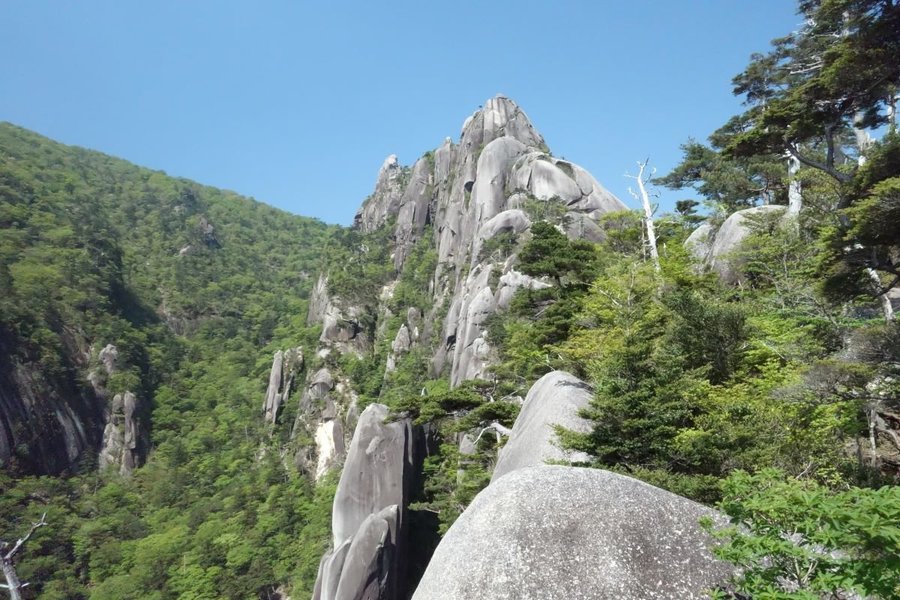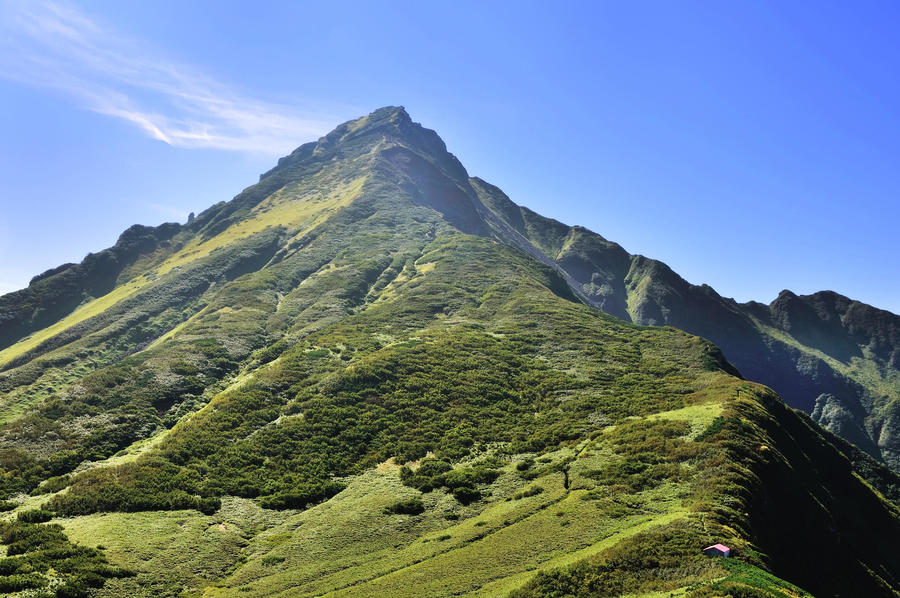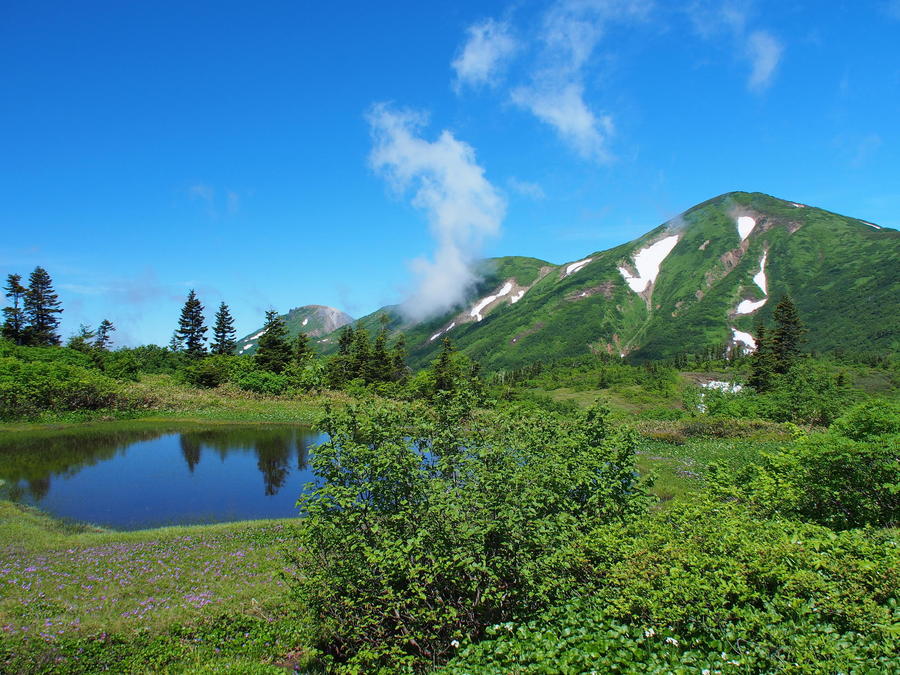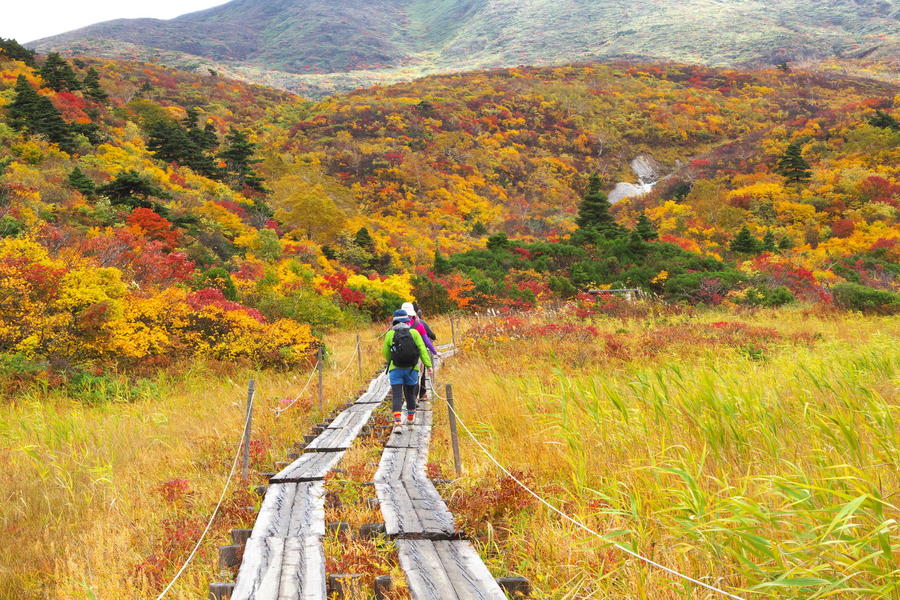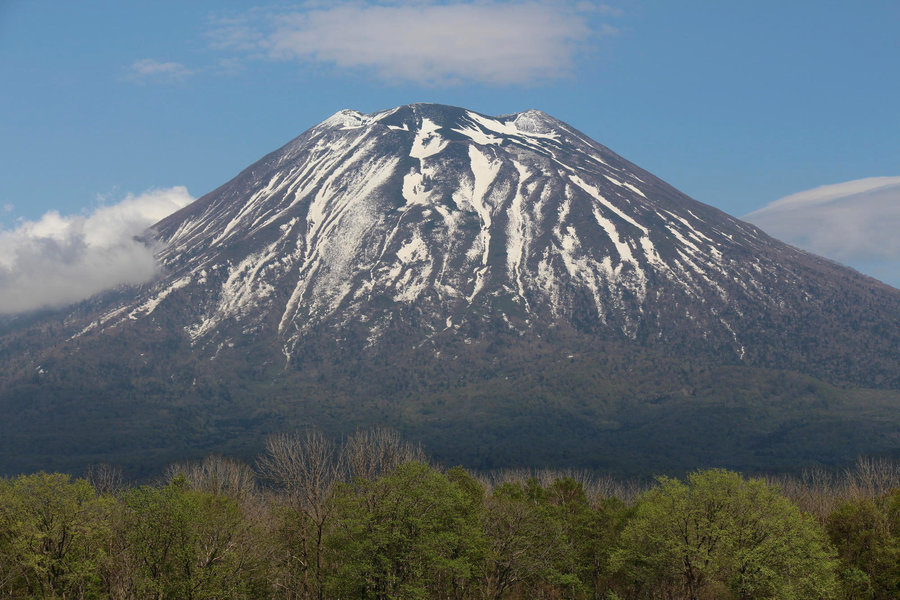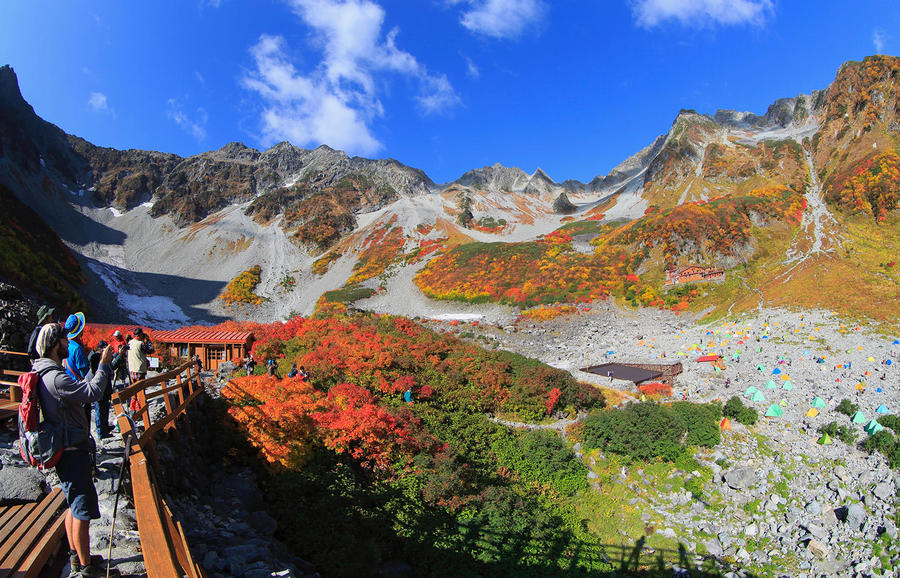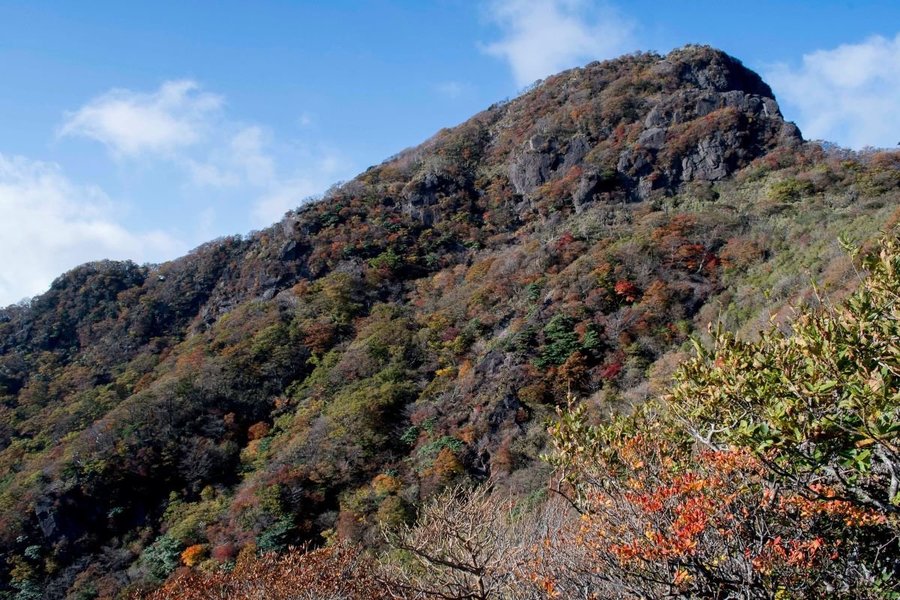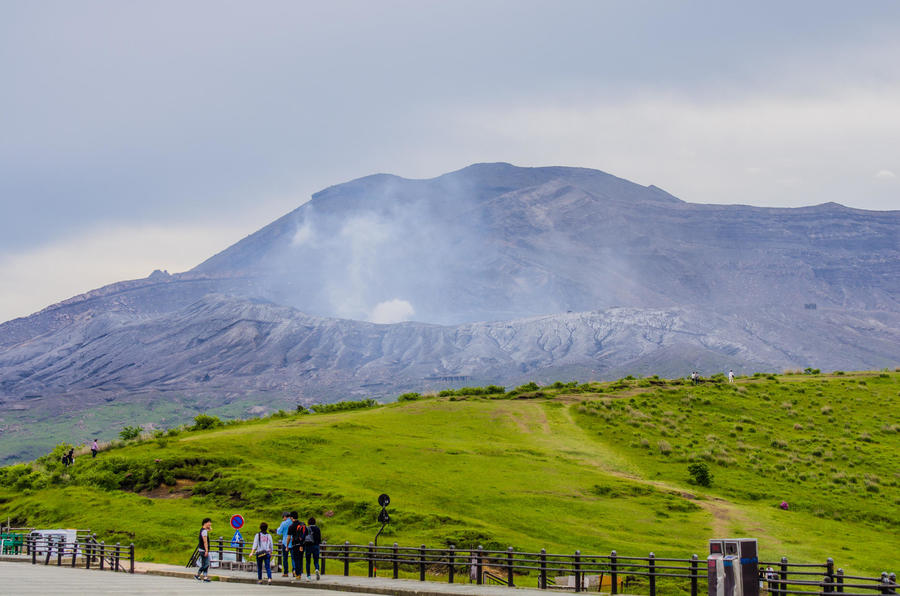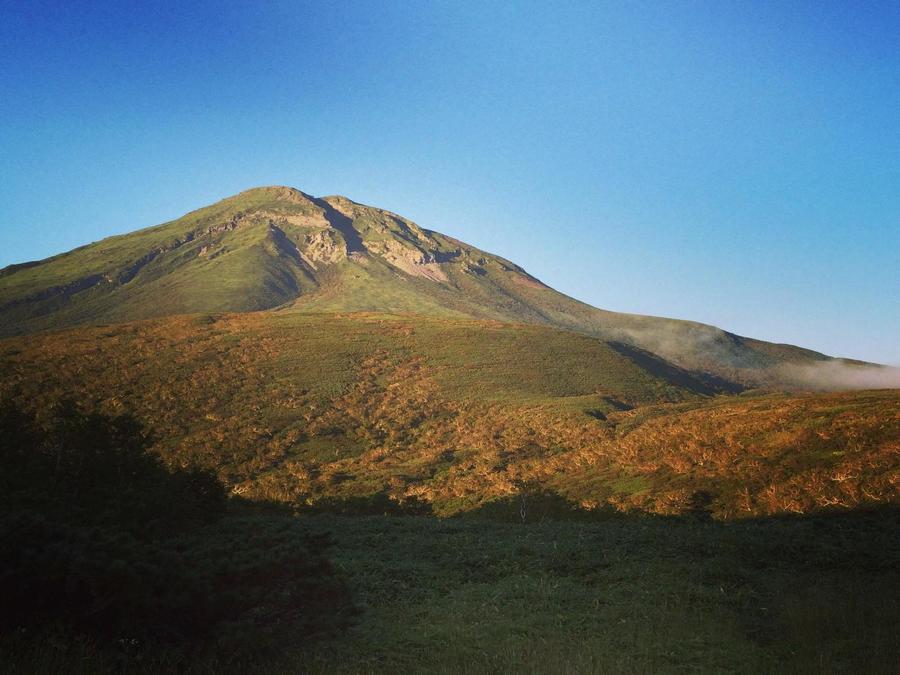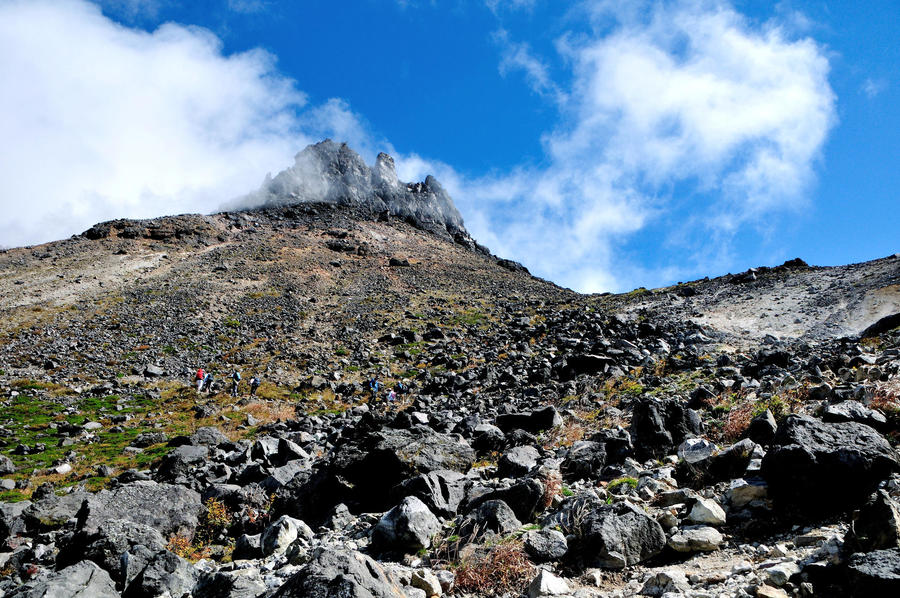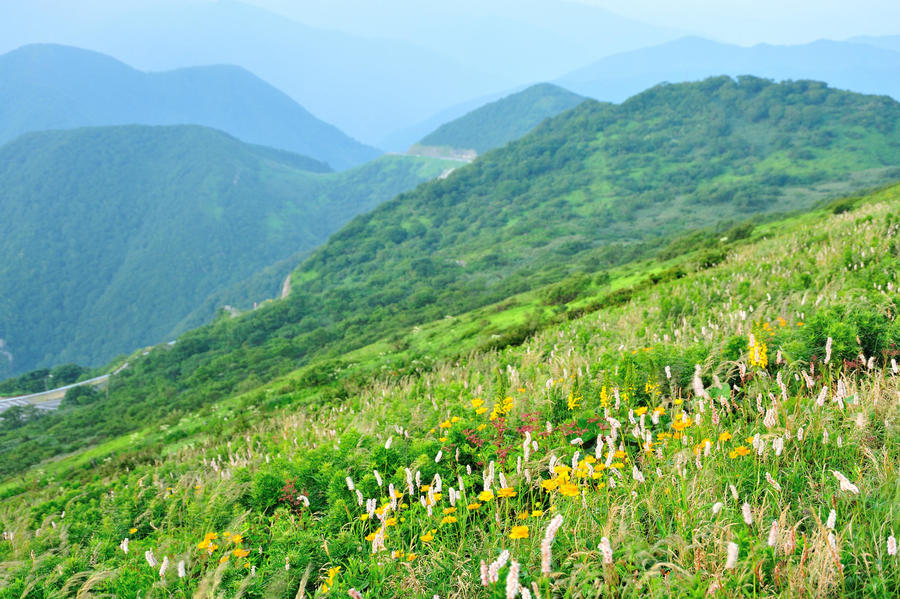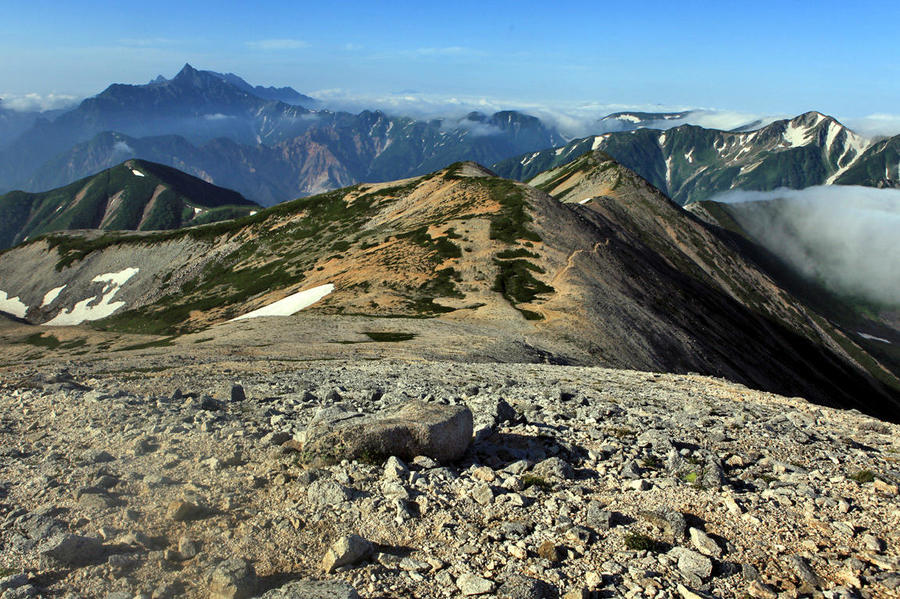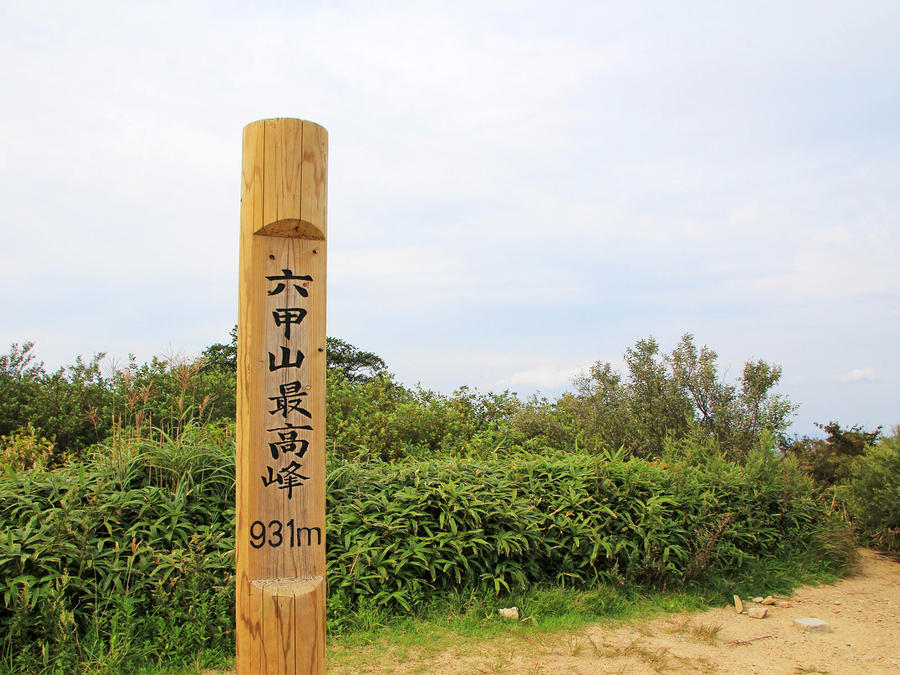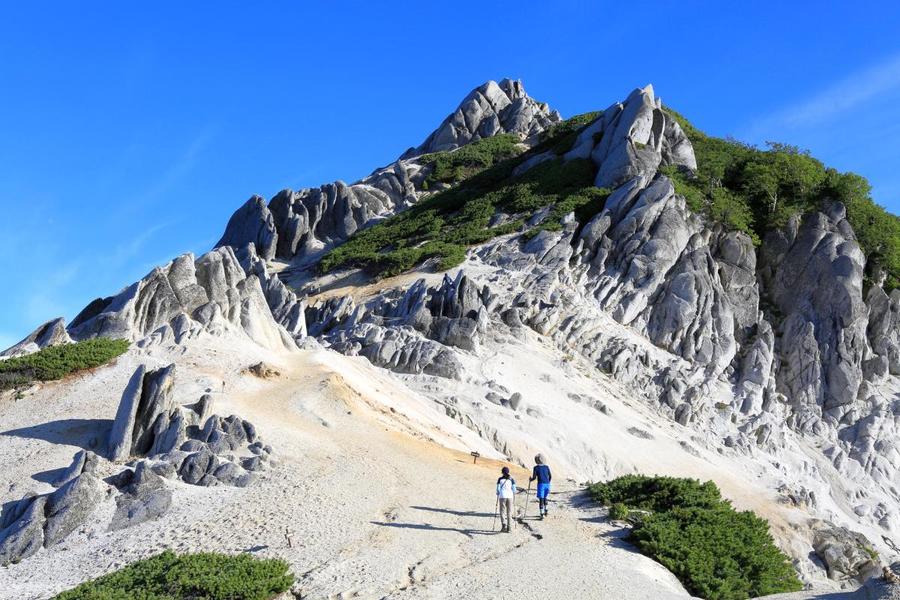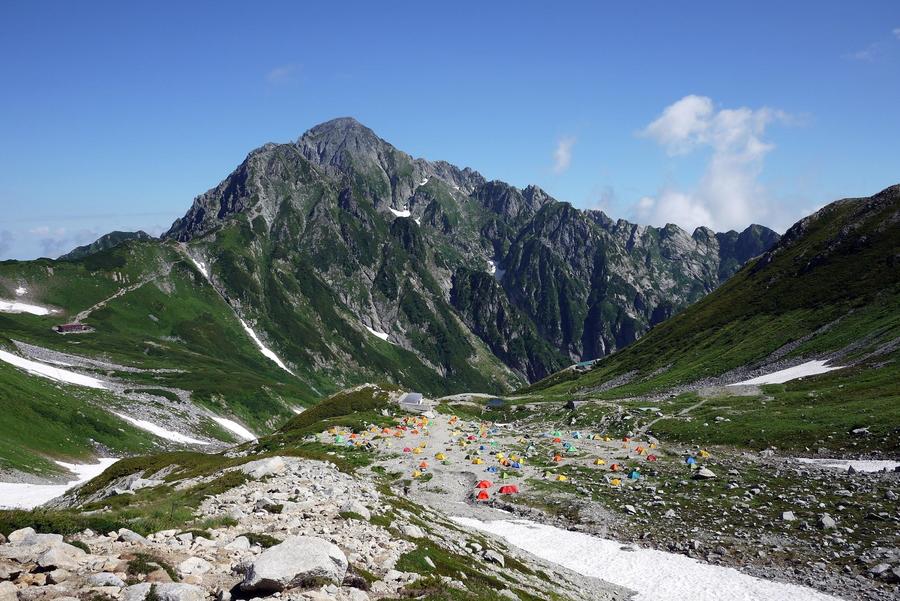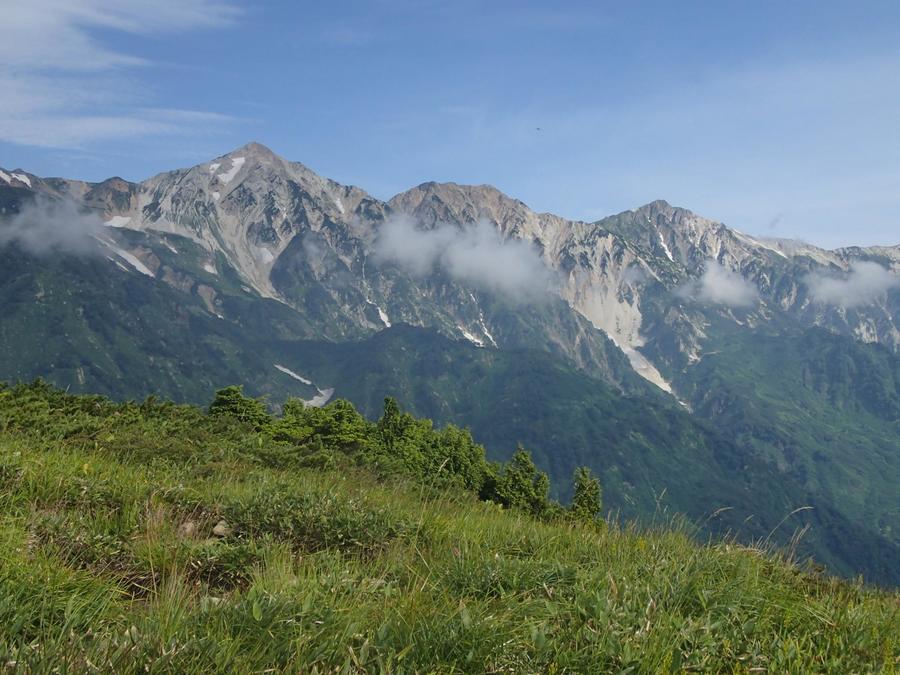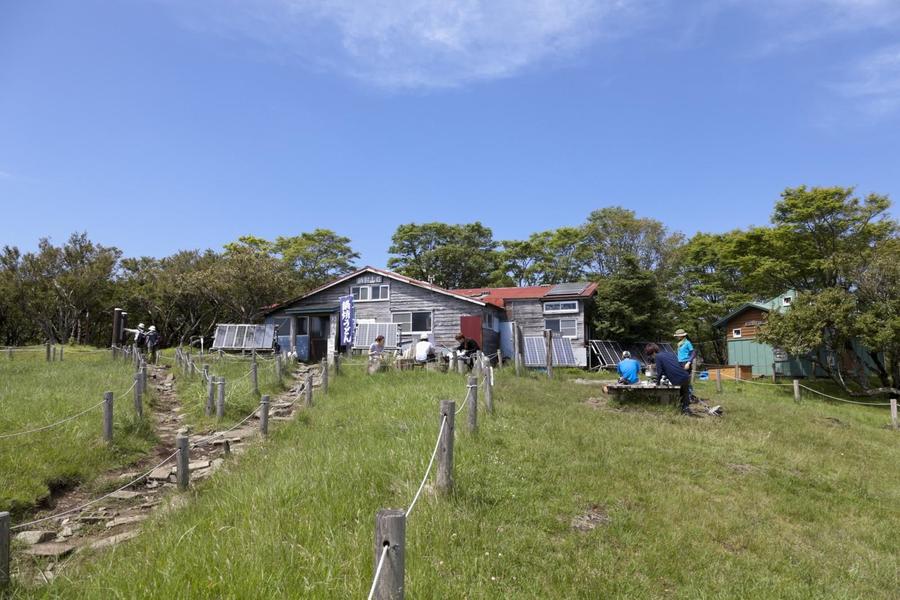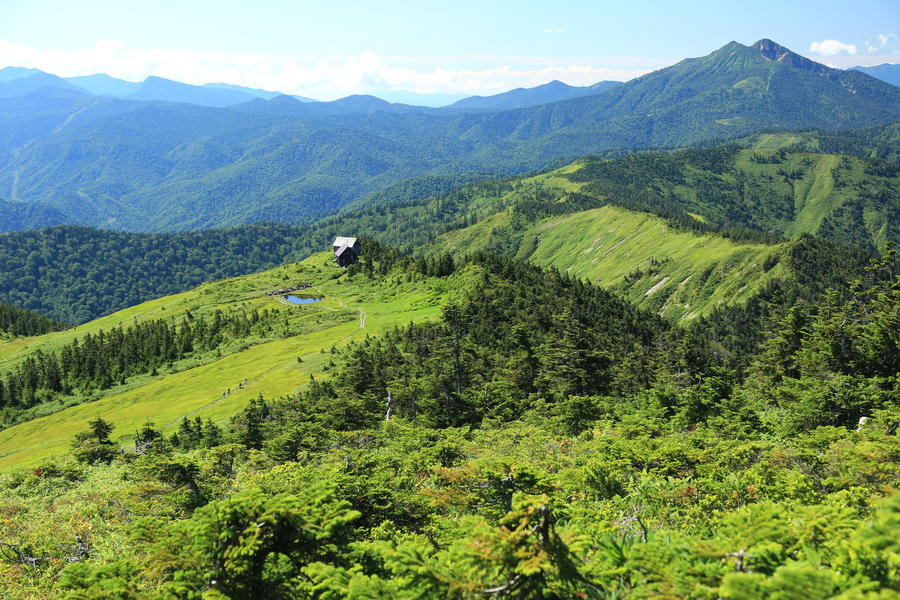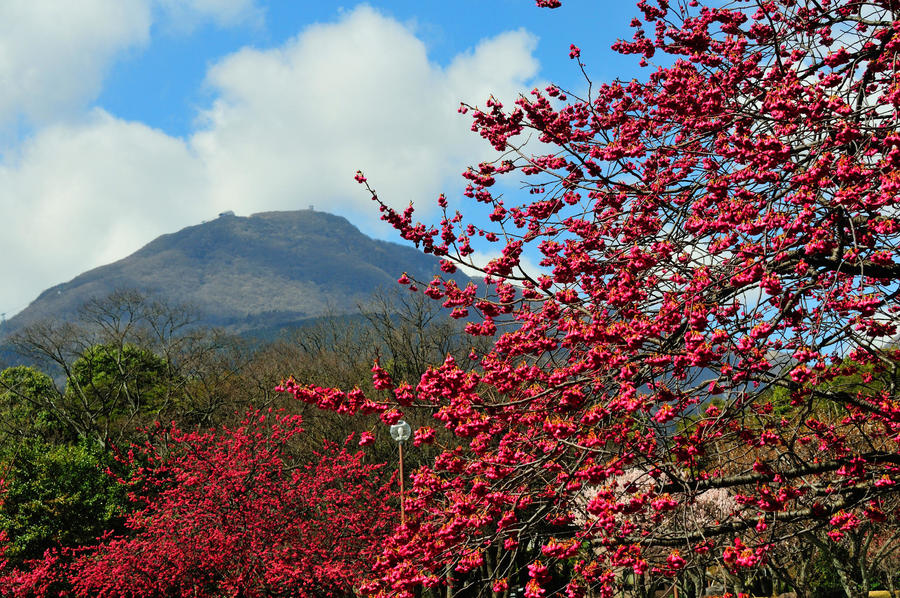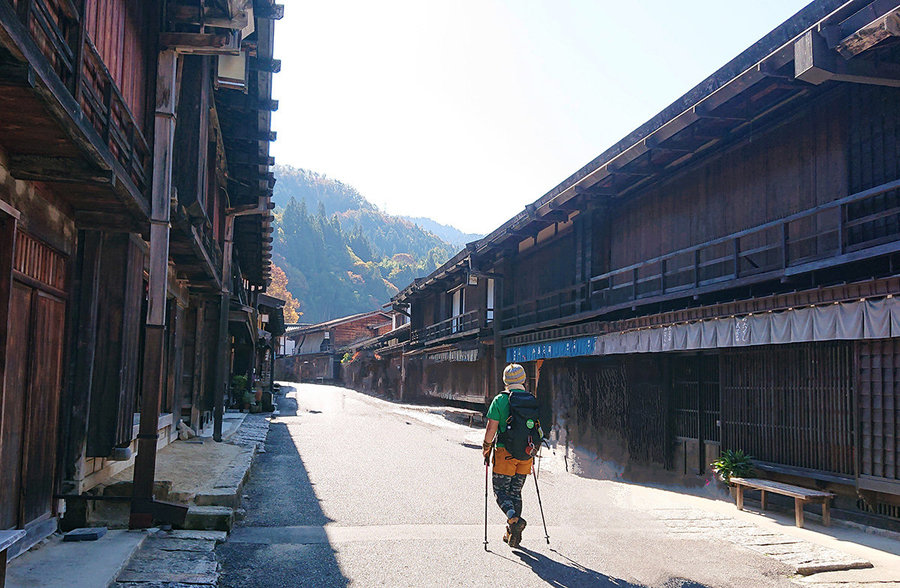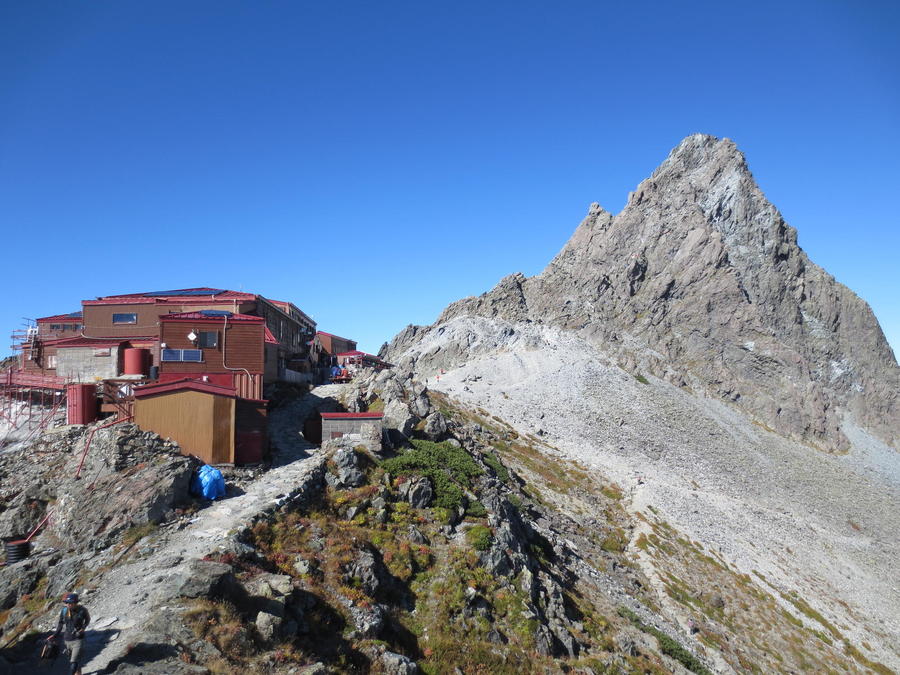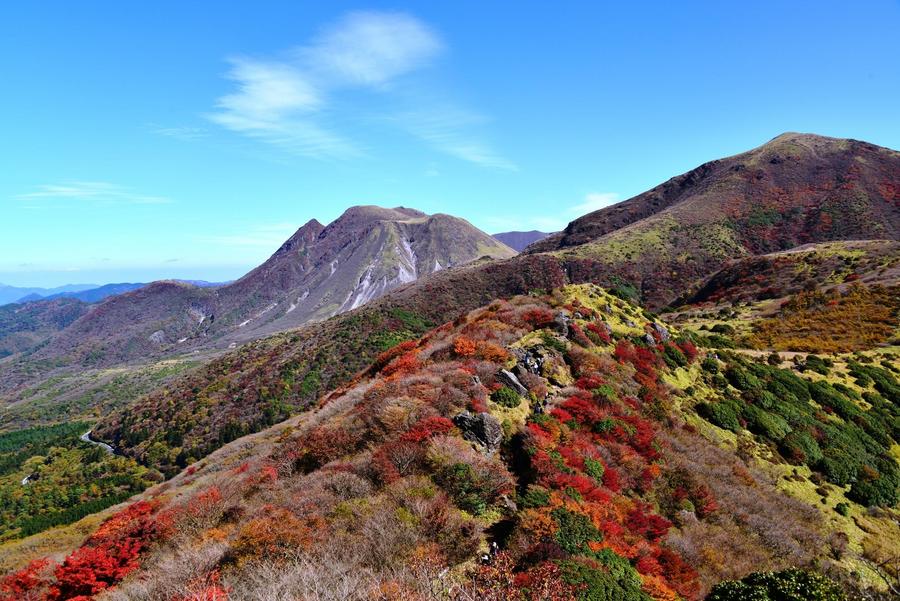The Best Times to Hike
Over the course of the year, mountains around Japan exhibit a wide variety of conditions. Here, we will introduce the time period in which you can enjoy the appeal of hiking and climbing at various locations in the safest and easiest manner.
The Okutama and the Tanzawa ranges
With elevations between 1000 m to 2000 m, these ranges offer a variety of mountains. They are generally climbed in May, when the new green foliage appears, and the October to November period when autumn foliage is at its peak. The early spring period with its forbidding snow and the Bon holiday with its extreme heat are not common times to hike. However, you can see flowering oriental paperbush (Edgeworthia chrysantha) shurbs on Mt. Nishitanzawa in March and dog's-tooth violet (Erythronium) on Mt. Gozenyama in April. Mt. Mitake draws many climbers in August when its false anemone (Anemonopsis macrophylla) flowers are in bloom.
Mt. Takao, Mt. Jinba, the Okumusashi range, the Boso Peninsula, the Miura Peninsula, and the Izu Peninsula
With many mountains around 1000 m tall, the hiking season in these areas stretches from October all the way to May, avoiding the heat of warmer seasons. Autumn foliage peaks from late October to mid-November and the green spring foliage is at its most vibrant in May. Thanks to a large number of sunny days, it is also possible to enjoy hiking in the winter. Mt. Takao, which attracts many hikers throughout the year, gets especially busy during the following peak periods: the autumn foliage season from mid-to-late-November, the first occurrence of the “Diamond Fuji” phenomenon and the first sunrise of the year, the cherry blossom viewing period of mid-April, and the Golden Week holiday from the end of April to the beginning of May.
Mountains in the 2000 m range in the Kanto and Koshin regions
(The Okuchichibu range, the Nikko range, the Nasu range, and Mt. Akagi)
The mountain ranges of Kanto and Koshin are known for their beautiful flora. From late May to early June, you can find rhododendron flowers in the Okuchichibu Range, Japanese wood poppies (Glaucidium palmatum) in the Nikko Range, and azaleain the Nasu Range and Mt. Akagi. For peak autumn foliage, visit in the first third of October. Naturally, you can also enjoy hiking from July to September.
Mountains in the 2000 m range in the Joshinetsu Region
(The Tanigawa Range, Mt. Naeba, Mt. Hiragatake, Mt. Amakazari and others)
Since mountains in this area get a lot of snowfall in winter the best times to hike are after the snow has melted. In July, you can see alpine flowers in meadows and marshes, and in early October, you can see peak autumn foliage. Naturally, you can also enjoy hiking from July to September.
Mountains in the 2000 m range, in Hokkaido, Tohoku and elsewhere in northern Japan
(Mt. Rishiri, the Shiretoko range, Mt. Daisetsuzan, Mt. Iwaki, Mt. Hayachine, Mt. Chokai, Mt. Gassan, The Iide range, the Asahi range and others)
The mountains in this area get a lot of snowfall due to their high altitude. Two recommended time periods for hiking are late June and July when alpine flowers are in bloom and mid-September to early October when autumn foliage is at its peak. The month of August, which is preferred by hikers of the Japan Alps and Mt. Fuji, is also a period when you can experience a relatively quiet time in the mountains. Even in August, large segments of snowy inclines can remain in valleys, so caution is necessary.
The mountains of Hokuriku and Tokai
(Mt. Hakusan, Mt. Arashimadake, Mt. Enasan, Mt. Ibuki, and the Suzuka range)
The high altitude peaks of Mt. Hakusan and the flowery meadows atop Mt. Ibuki are best visited from late July to mid-August, when the alpine flora is blooming. Mt. Hakusan also offers beautiful autumn foliage in late September The lower altitude peaks of Mt. Arashimadake, Mt. Enasan, and the Suzuka range are best hiked during May and June to avoid the summer heat while enjoying the sight of flowers and spring foliage. The autumn foliage of October is also highly recommended.
Mountains in the 2000 m range in the west of Japan
(Mount Odaigahara, the Omine range, Mt. Daisen, Mt. Ishizuchi, Mount Tsurugisan, the Kuju range, Mt. Aso, Mt. Sobo, the Kirishima range, and others)
The recommended hiking seasons are from mid-May to early June, when the flowers and spring foliage are at their prettiest, and mid-to-late-October, when the autumn foliage peaks. From June to September, the area is susceptible to heavy rainfall and typhoon activity caused by weather fronts. In recent years, western Japan has also suffered frequent landslides, so be sure to check weather forecasts before embarking on any mountain excursions.
Mountains in the 3000 m range in the Chubu region, such as the Japan Alps and the Yatsugatake range
The best time to hike in these high altitude mountains with their many rock faces is from July to September. You can enjoy vibrant green foliage and alpine flora from July to August and autumn foliage in mid-to-late-September. However, the brief periods, which are popular among hikers, suffer from crowded mountain huts and trails on long weekends and public holidays. Assuming that there is no typhoon activity, early September is a good time to hike since there are relatively few hikers and you can enjoy quiet hikes in the mountains. Due to large, glacial patches of snow remaining in valleys and on the north faces of mountains until mid-August, some areas may only be hiked in the autumn. These include the Kurobe Gorge, the Shimono-roka (lower corridor in Kurobe Gorge), the Karasawa Cirque, and the Byobu Panorama Course.
Mt. Fuji
Mt. Fuji’s hiking season is only from early July to end of August when the mountain huts are operating. Due to the influx of hikers during this period, mountain paths and mountain huts become very crowded. The easiest of the four routes, the Yoshida Trailhead Route, is also the most congested. If you are hiking as far as the Fifth Station, the autumn foliage around Oniwa and Okuniwa as well as the Mt. Hoei crater is at its best from early-to-mid-October.
Yakushima Island
The best times to trek to the Jomon Sugi and around the Shiratani Unsui Gorge are March through May and from October to early December. Due to its high elevation, Rhododendron yakushimanum is best climbed in May, when the rhododendrons are in bloom, and in October, when the weather is consistently calm. While the island is especially prone to heavy rain and typhoons caused by weather fronts, frequent rain throughout the year makes it necessary to bring raingear whenever you visit.

